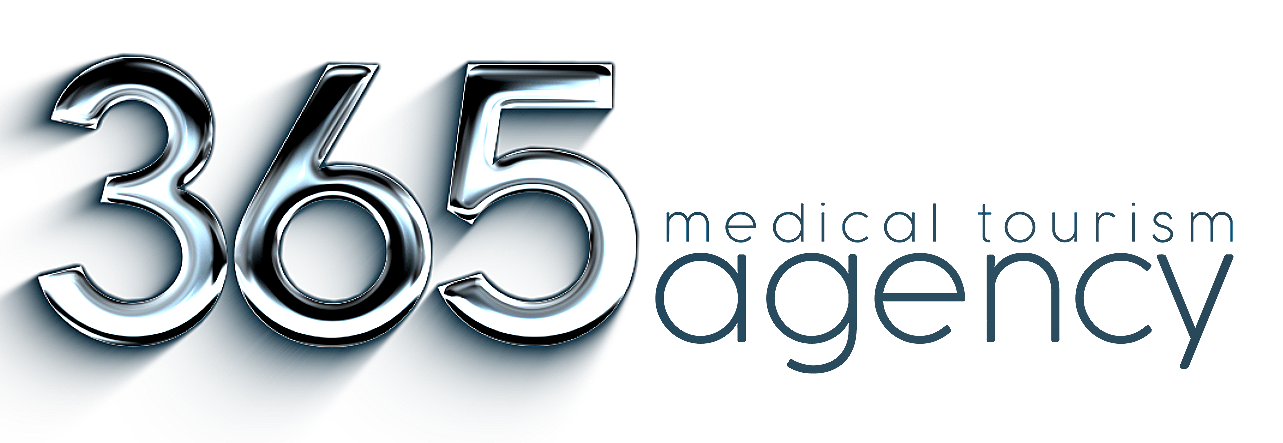Республика Корея, 06035, г. Сеул, Гангнам-гу, Тегеран-ро, 151
V-Line surgery is a modern surgical procedure aimed at altering the contours of the lower face and cheeks to achieve the desired V-shaped appearance. It includes the correction of cheek shape, jawline angles, and chin tip. Hence, the V-Line surgery is often referred to as the triple jaw and facial surgery.
Surgical access is gained through the mouth, leaving no external scars or visible traces of the operation. The procedure involves the removal of excess bone tissue, resulting in a more graceful and refined facial shape while reducing its size.
The surgery is performed under general anesthesia and typically takes about three hours. The recovery period ranges from several weeks to a month. During this time, patients may experience swelling and discomfort while speaking and eating, which gradually diminishes and disappears.
Brief surgery information
-
Surgery Time: 3 hours
-
Type of Anesthesia: General anesthesia
-
Hospitalization: 24 hours
-
Return to Normal Life: Within 2 weeks
-
Clinic Visits: 3-4 times
-
Stitches Removal: Day 14
Why do patients consider V-Line surgery?
Patients may consider V-Line surgery (facial contouring surgery for a V-shaped face) for several reasons:
-
Pursuit of Beauty Ideals: In many cultures, especially in Asian countries, a V-shaped facial contour is considered the beauty ideal. This facial shape is characterized by a narrow chin and well-defined jawlines, giving the face a softer and more feminine appearance. Patients aiming to conform to these aesthetic standards may opt for V-Line surgery.
-
Improving Facial Proportions: For individuals with wide or square jawlines, V-Line surgery can help achieve more harmonious and balanced facial proportions, making the overall appearance softer and more refined.
-
Enhancing Self-Esteem and Confidence: Some people may feel insecure about the shape of their face. Altering facial contours through V-Line surgery can significantly improve their self-esteem and confidence in their appearance.
-
Social and Professional Reasons: In certain professions or social situations, appearance can play a crucial role. Individuals whose work requires a specific image or appearance may choose V-Line surgery to enhance their career prospects or social status.
Who is a suitable candidate for V-Line surgery?
Candidates for V-Line surgery typically possess the following characteristics:
-
Good Physical Health: Ideal candidates for this surgery should be in overall good physical health, free from serious medical conditions that could increase the risk of complications during or after the operation.
-
Realistic Expectations: It is crucial for candidates to have realistic expectations regarding the surgery’s outcomes. They should understand the possibilities and limitations of surgical intervention.
-
Normal Weight: While the surgery focuses on changing bone structure, excess weight can hinder the visibility of results. Candidates with a normal body mass index (BMI) can expect more noticeable outcomes.
-
Absence of Psychological Disorders: Candidates should not have psychological disorders that could affect their ability to perceive themselves and their expectations from the surgery adequately.
-
Skeletal Maturity: The surgery is recommended for patients whose skeletal structure is fully formed, typically occurring after the age of 18-20.
Why South Korea?
South Korea annually performs more cosmetic procedures and surgeries than any other country in the world. Local doctors are considered the most educated and competitive globally because only 0.01% of medical school graduates can become plastic surgeons here. Korea’s medical equipment and technology are on par with the USA and Germany, placing it in the top 3 countries with the best-equipped medical clinics.
All procedures related to maxillofacial surgery are conducted in accredited clinics with permission to treat foreign patients and have in-house anesthesiologists. All surgeons who operate on our patients have between 15 to 30 years of experience, specialize in maxillofacial surgery, and perform no more than 2 surgeries a day. Fill out the QUESTIONNAIRE so that we can calculate the cost of your treatment, provide a preliminary consultation, and prepare a plan for your trip to South Korea for the surgery.
How to prepare for maxillofacial surgery in South Korea
-
Refrain from eating and drinking for 10 hours before the procedure. Take a shower.
-
Avoid taking aspirin, ibuprofen (including medications like Advil or Motrin), and other drugs that may increase the risk of excessive bleeding for 2 weeks before the surgery. Tylenol is only prohibited for 3 days before the operation.
-
Do not smoke, including hookah and e-cigarettes. Smoking reduces blood flow to the skin and may slow down the tissue healing process. If you smoke, the doctor will recommend quitting smoking before the surgery. Some doctors refuse to perform surgery on smoking patients due to a high risk of complications. It is unsafe to be around smoking relatives and friends or in public places designated for smoking.
-
Review your medical history. Be prepared to answer questions about current and past illnesses, as well as any recent medications you have taken. Please do not hide this information from the surgeon and coordinators.
-
Visit the surgeon for an examination and show them photos of the desired results.
-
If you have had tests done less than a month ago, you can bring them with you. If not, we will conduct all necessary tests in Korea.
-
Ask someone to drive you to the clinic or help you after the surgery if you plan to arrive by car.
-
Place items next to your bed that you may need during rest, such as lip balm, water, a chocolate bar, or a mobile phone.
How is V-Line surgery performed
Before the surgery, you will undergo a minimum of 2 consultations with the surgeon and provide tests to gain access to the procedure. On the morning of the surgery, the surgeon designs your face, answers questions, and hands you over to the medical coordinator.
You will be taken to the bathroom, asked about your condition, and checked for the last time you consumed water and food. Then you will be taken to the operating room, where your hands and legs will be secured to ensure your safety and prevent involuntary movements during the surgeon’s work. A catheter will be inserted into your hand to administer medications and anesthesia through the bloodstream.
Once the anesthesiologist puts you to sleep, the surgeon makes a small incision in your mouth and reduces the size of the bones through it. To facilitate faster healing according to the plan, small titanium plates are installed, which can be removed if desired after 1-2 years post-surgery.
After completing the surgery and suturing the face, a special bandage is applied to protect the surgical area from damage, hold the tissues together, and reduce swelling. The patient wakes up and is escorted to the recovery room for further recuperation.
What to expect after surgery
After the surgery is completed, a translator or medical nurses will wake you up and assist you in transitioning to your room. Most patients do not remember this moment, and it may feel like they woke up in a warm bed, thanks to the effects of anesthesia.
In the first 10-20 minutes after waking up, you may experience shivering, but this will quickly pass. A warming mattress is placed on your bed to make this period more comfortable. Some degree of pain may be present, although it is dulled by pain-relieving injections and medications used during the surgery. Typically, pain is most intense at the moment of waking up, but the effects of the medications will kick in, and you can request pain-relieving injections 1-2 hours after waking up.
In addition to discomfort, you may notice swelling in your face – not only in the cheeks and chin but also in the eyelids, nose, and even lips. This is normal as your body begins the regeneration process. You may also feel discomfort from the compression bandage – many patients complain that it presses on the neck under the chin. You can adjust the bandage slightly or ask for a cotton pad to be placed under it, but do not remove it. It stays on for 2 weeks, so patience is required.
A few minutes after waking up, you will be given a cold compress. You can apply it not only to the areas around your cheeks but also to other parts of your face. The more you use the compress in the first week after the surgery, the faster the swelling will subside.
You will remain in the clinic for about 24 hours after the surgery. You will have a catheter in your arm delivering medications. On the following day, the coordinator and medical nurses will check your condition. If you do not experience symptoms such as dizziness and nausea, you can start preparing for discharge by changing clothes, collecting your medications, and receiving post-operative instructions.
By evening, pain may intensify. Make sure to place several pillows under your head to reduce swelling and take the medications prescribed by the surgeon, which contain pain relief. Apply a cold compress every few minutes. You may experience a mild headache, nosebleeds, or nasal discharge; these are normal symptoms, so use tissues and do not blow your nose. Over the next three days, swelling will increase, affecting the eyelids and nose. Do not be alarmed and continue to apply cold compresses and follow the rehabilitation guidelines. Remember that you are not allowed to eat solid food for 4 weeks, so prepare porridge, soups, juices, smoothies, and chocolate in advance to get through this period.
On the 4th day, swelling will gradually start to decrease. Remember to rinse your mouth every 2-3 hours and after each meal to prevent infection.
By the end of the week, you will look much better. Try to walk and sleep with your head elevated as much as possible. After 14 days, the surgeon will remove the stitches. It might be slightly uncomfortable, as the skin inside the mouth is thin and delicate, but this process will be quick, and you will enjoy the results for a lifetime.
Book a consultation with the clinic coordinator or plastic surgeon today!
You can book a consultation by filling out the QUESTIONNAIRE or contacting us on any messenger at +82-10-4214-9603.
Recovery process
Immediately After the Procedure: Your face will have a compression bandage, and you may experience moderate pain. You will spend the first night in the clinic under medical supervision. Your face will start to swell, and you may feel pressure under the bandage. Unfortunately, you will have to endure this discomfort for several days.
Day 1-2: After about 24 hours, the hospitalization period ends, and if you are feeling well, you will be discharged. Swelling will peak, affecting your entire face, and fluid may leak from your nose (due to its proximity to the surgical area and the development of swelling). Do not blow your nose; gently wipe it with a tissue.
Days 3-7: Swelling gradually begins to decrease. Avoid strenuous activities and any activity that requires bending your head down. Continue to sleep with your head elevated.
Days 7-14: Reduction in swelling, disappearance of discomfort, and a gradual return to normal life. Regular, prolonged walks are recommended for faster recovery. Stitches and bandages are removed. Do not smoke for at least 15 days after the surgery; if you introduce an infection, a repeat surgery may be required. Vaping, hookah, and other forms of smoking are also strictly prohibited. If you cannot resist and additional swelling occurs, contact the coordinator immediately and do not hide the cause of infection.
Days 14-21: Continue to avoid intense workouts and physical exercises. Consume liquid food and regularly clean your teeth and rinse your mouth. The risk of oral cavity infection is much lower at this stage, but continue to follow the rehabilitation rules, do not smoke, and do not consume alcohol.
Days 21-30: Your face may occasionally swell, depending on which side you slept on. Swelling may shift to the left or right side, and it varies each day. Do not be alarmed; this is normal. Even with the slowest recovery, patients return to work during this period, and it is not noticeable that surgery was performed. However, the face may still be puffy, especially in the mornings. Be patient and wait for the results.
Days 31-60: Swelling is nearly completely gone, and you will forget that you had surgery. You can gradually start eating more solid food, starting slowly and increasing the quantity and load. You can also gradually start exercising.
Days 60-90: You can swim in the sea, sunbathe, perform regular exercises, and lead a normal life. Your face may still swell in the mornings, especially after consuming alcohol, but do not worry; the final swelling will subside after a year from the surgery.
1 Year After Surgery: Complete the rehabilitation process.
Frequently Asked Questions
We inform our patients of the final cost, which includes post-operative care, anesthesia, room stay, medications, and even VAT (which can be refunded as tax-free). The cost of the surgery ranges from 15,500,000 to 23,900,000 KRW depending on the clinic and the scope of the operation. Accredited plastic surgeons in Korea caution that the price of the surgery may change after a personal examination and depending on whether your operation is primary or revision.
On average, it takes about 3 hours. Faster doesn't necessarily mean better.
With a properly performed operation, sensitivity will fully return within three months after surgery (usually within 1-2 weeks).
Incisions are made inside the oral cavity, and within a few months, you won't even feel them with your tongue, and nothing will be noticeable on the outside.
If you don't want your colleagues to know about your surgery, we recommend taking a 2-week leave, as stitches are typically removed after 14 days. If it's not a concern, you can return to work as early as 3-4 days after surgery.
No, the surgery does not affect this area.
Most surgeons agree that patients should be at least 18 years old. In some cases, surgery can be performed a bit earlier with the guardian's consent.
The final results can be seen a year after the surgery, but the face will look normal within 15-20 days.
It should be at least 6 months after childbirth and the end of breastfeeding.
This depends on your individual characteristics. Typically, 0.7-0.9 cm is removed.
Not earlier than 4 weeks. Before that, it's important to consume liquid food.
If the surgery is performed by a surgeon specializing in jaw reduction and if you follow all the rehabilitation rules, the likelihood of needing a revision surgery is very low.
You should walk more, avoid spicy and salty foods, eat pumpkin-based foods, take additional supplements to reduce swelling, and receive laser procedures at the clinic.
Yes, of course, you can choose to have any of the surgeries separately.
They are made of titanium, the same material used for dental implants. It is completely safe for the body.
Absolutely none. You won't feel them under the skin, they are not magnetic, and they won't interfere with MRI scans or airport security checks.
If desired, they can be removed 1-2 years after the surgery. Less than 5% of patients choose to do this; most live with them for life.
Yes, this option is available.
Yes, it can be combined with any other procedure except for facelifts. Some surgeons do not recommend combining it with rhinoplasty.
The patient may find it difficult to breathe for the first 2-3 days if these surgeries are performed together.
Surgeons agree that any time of year is equally comfortable for patients. The most popular seasons for plastic surgeries are spring and autumn, so we recommend booking at least 1-2 months in advance during these times.
Before & After
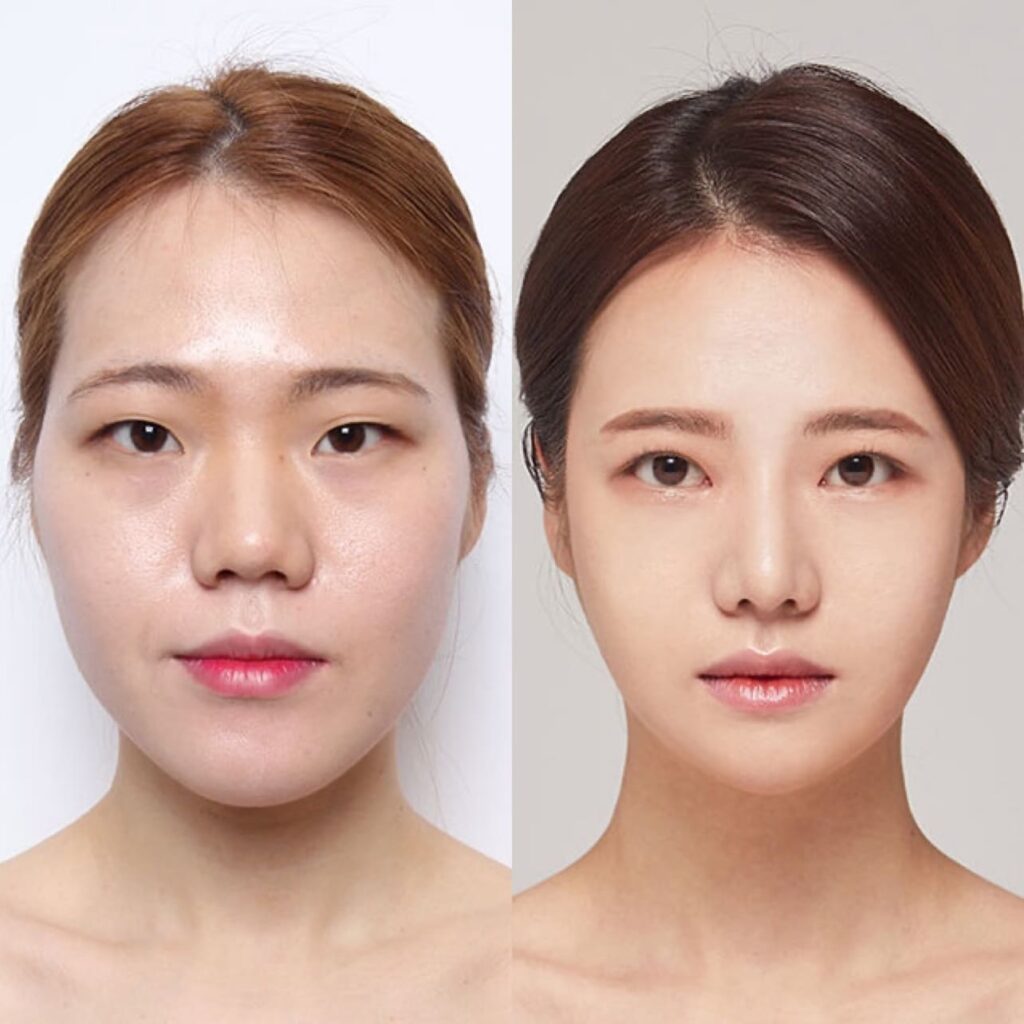
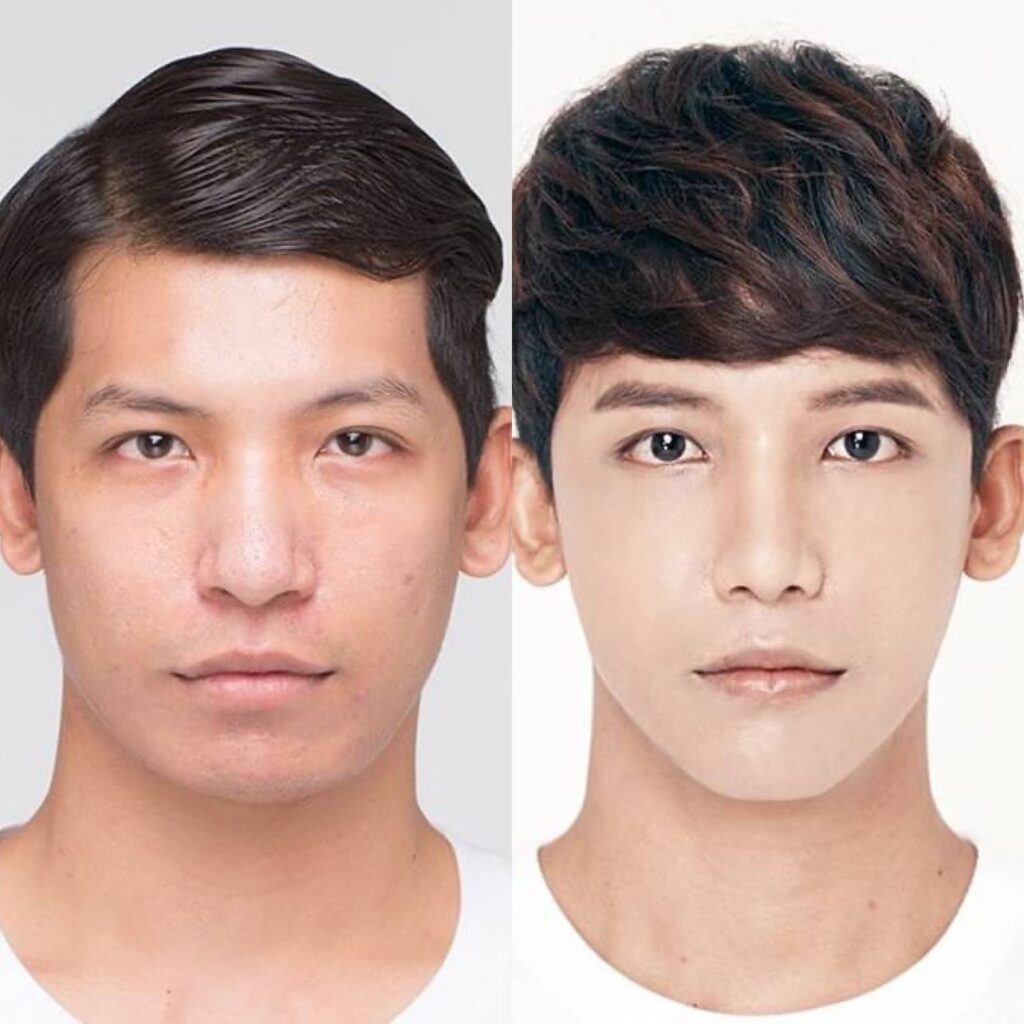
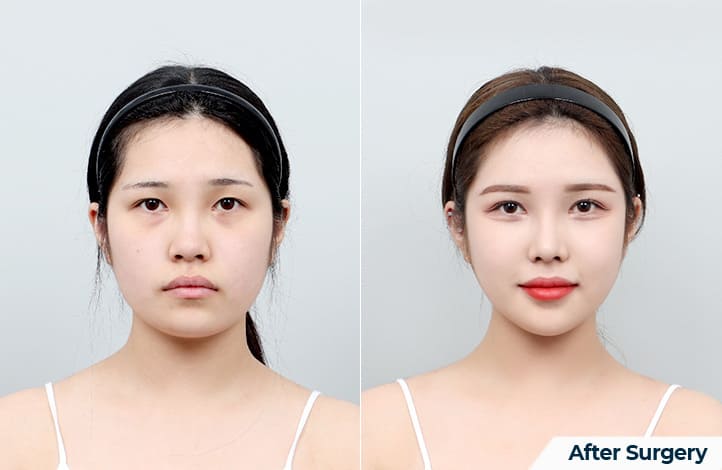
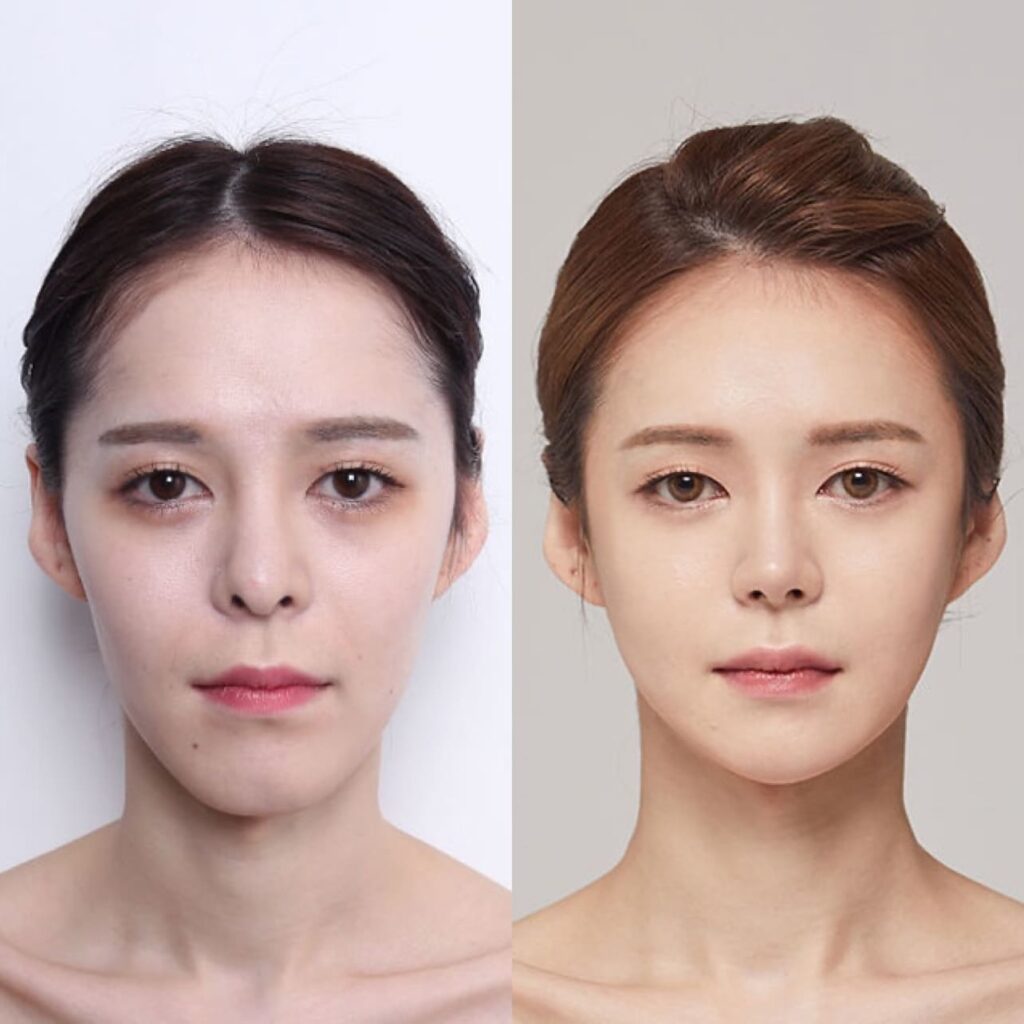
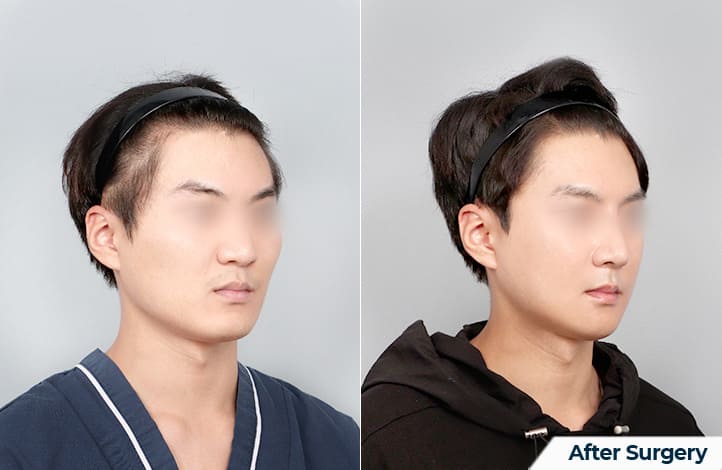
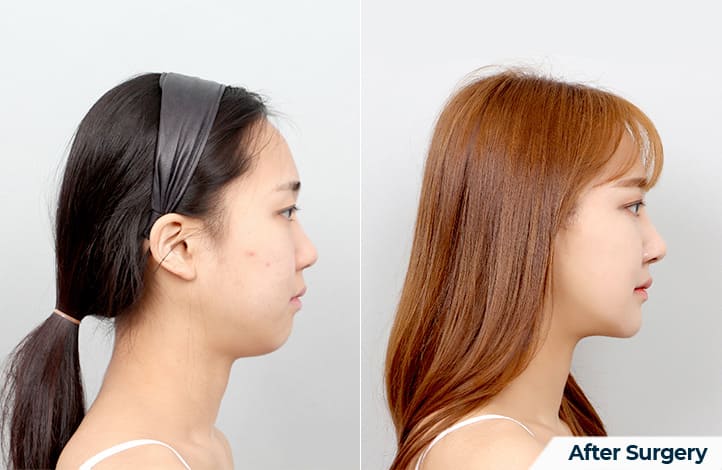
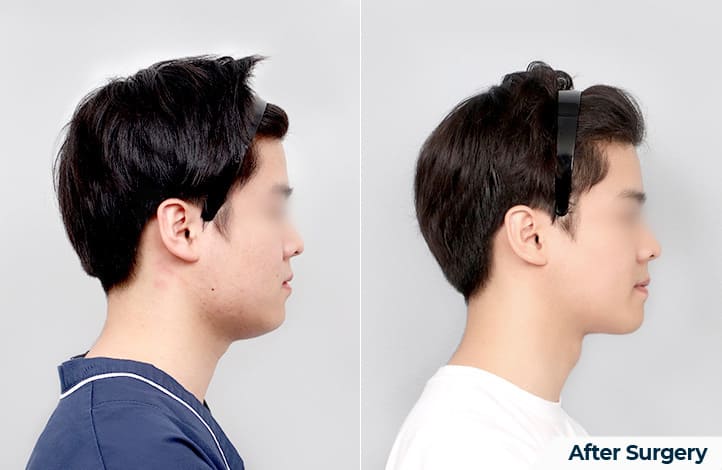
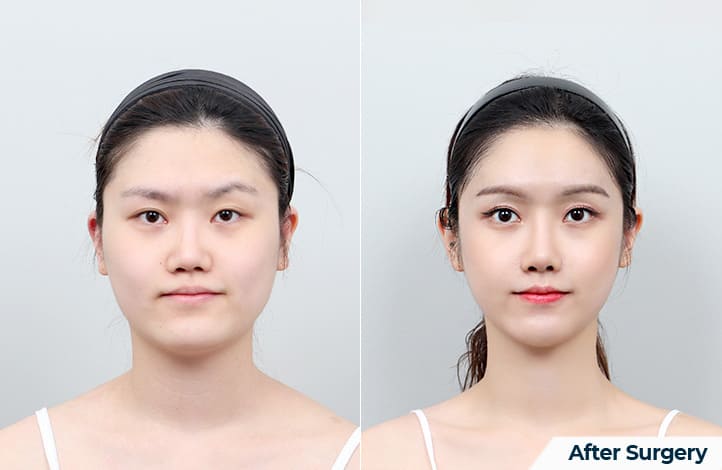
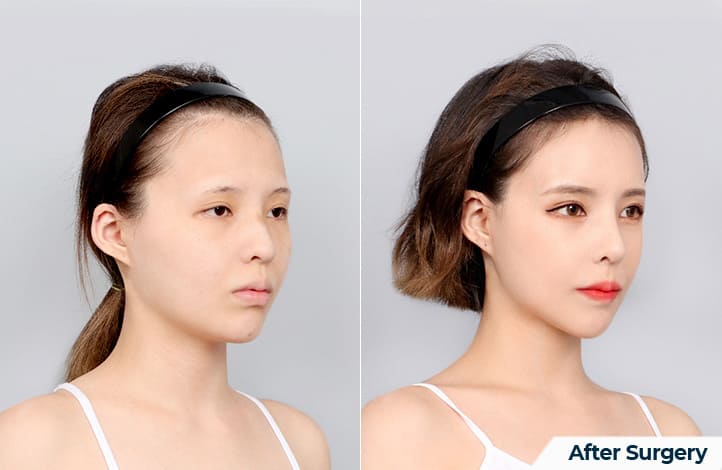
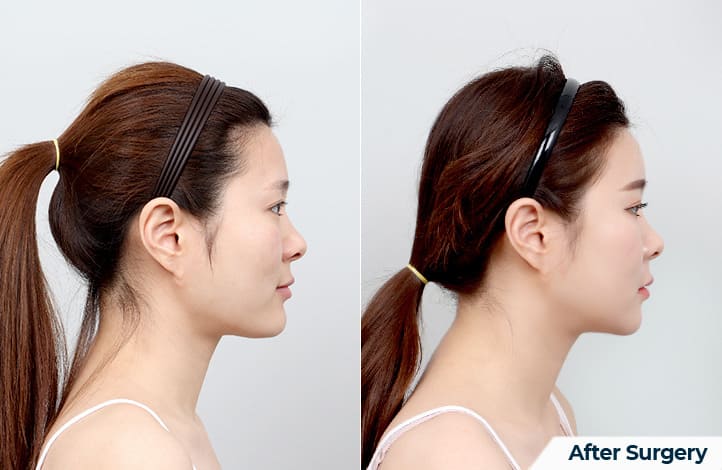
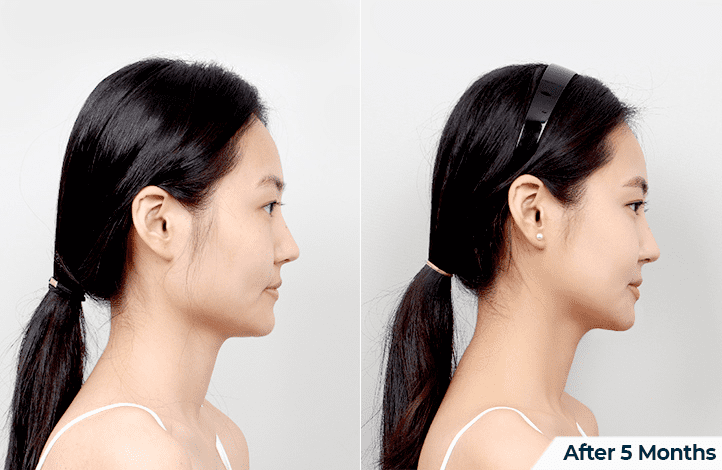
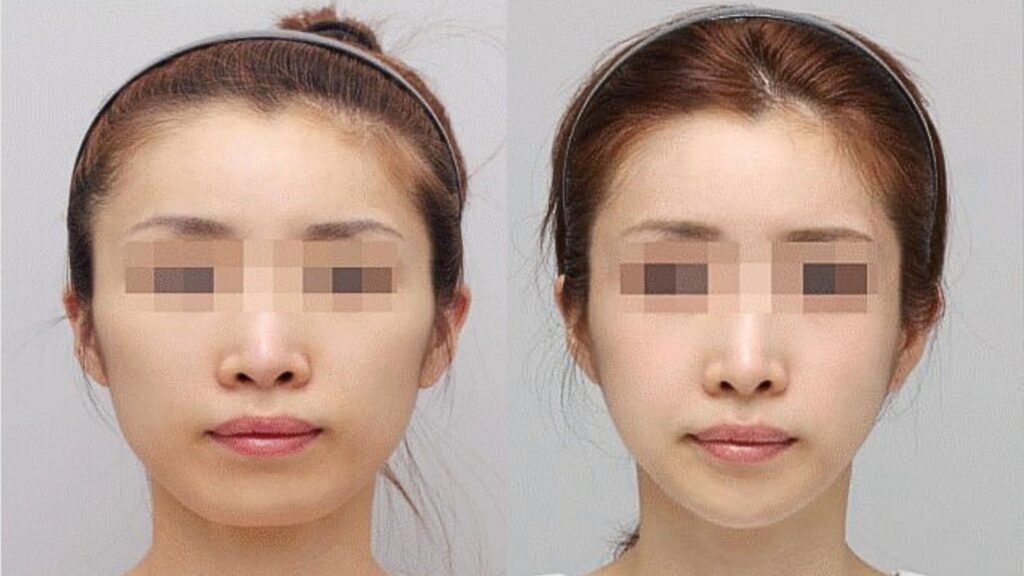
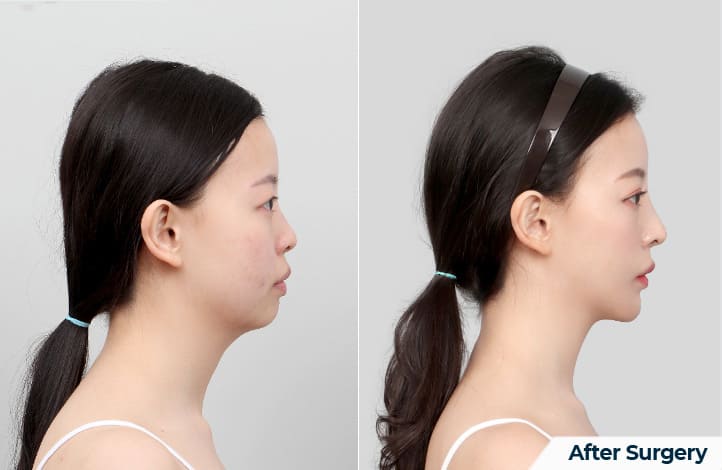
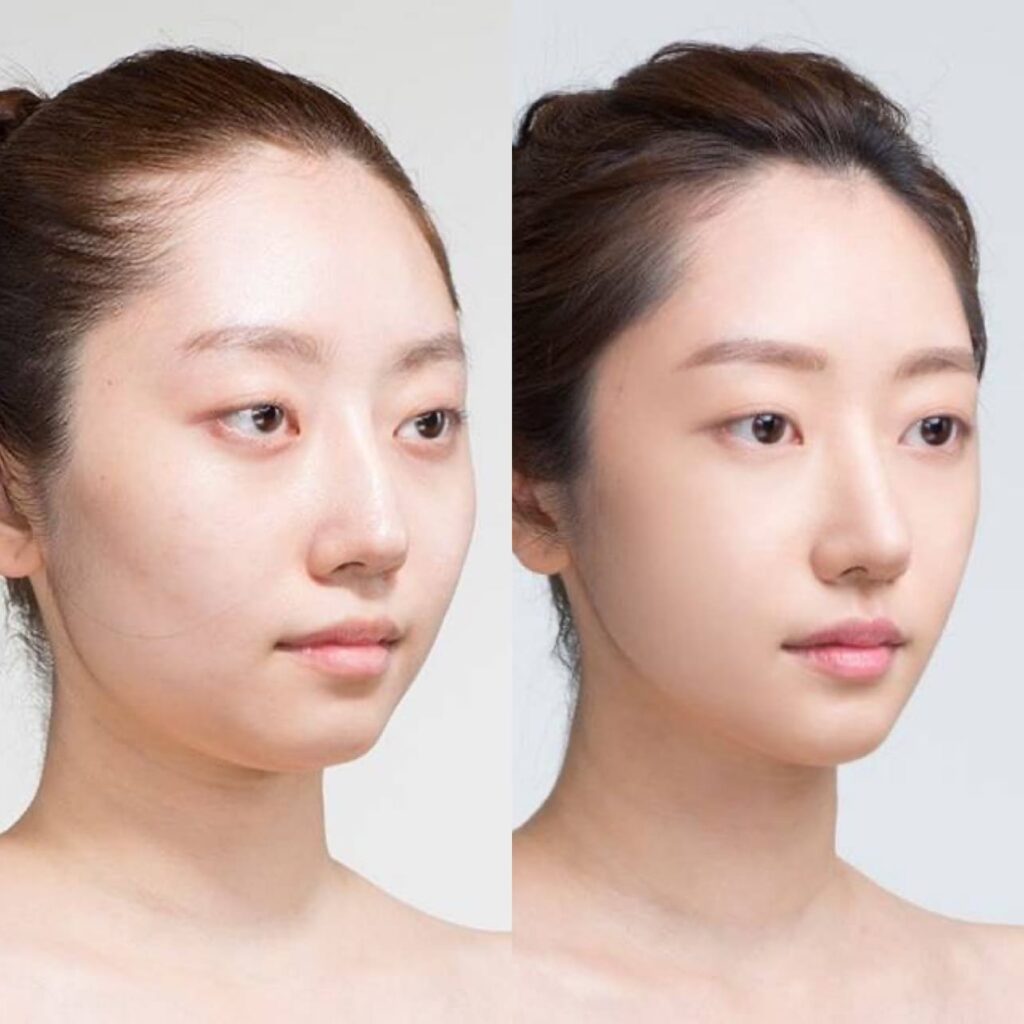
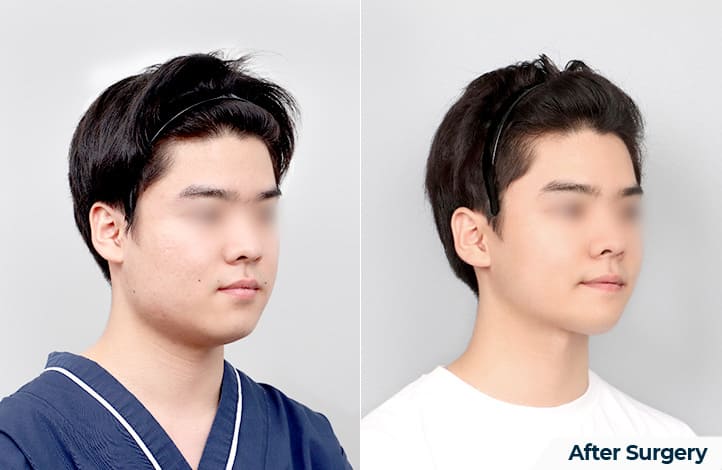
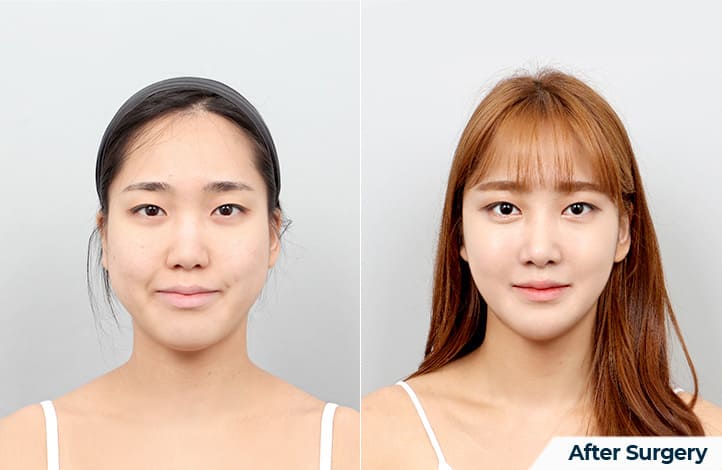
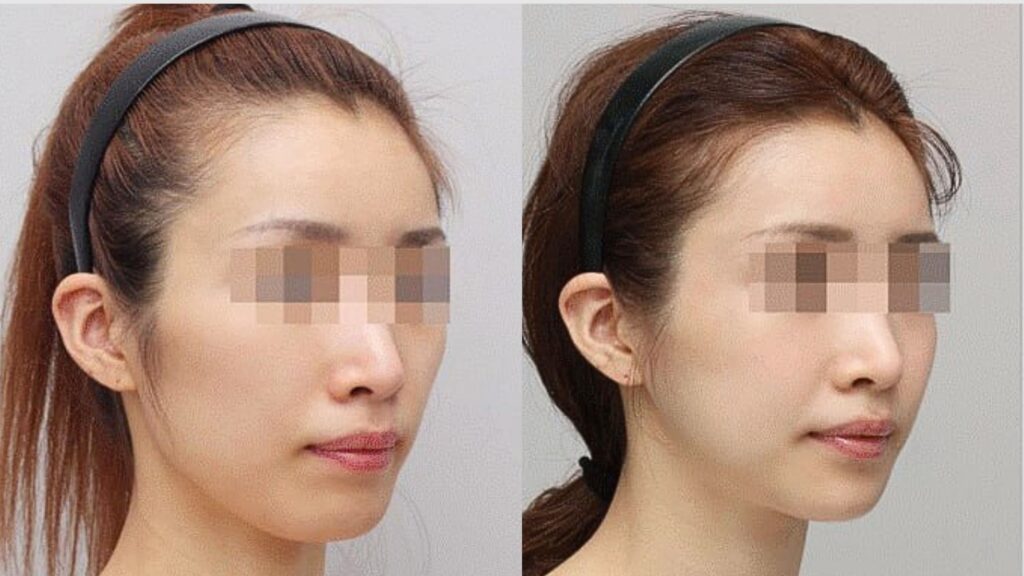
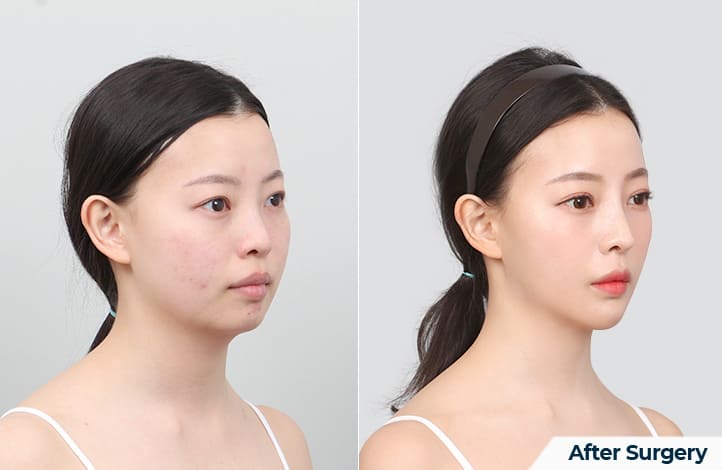
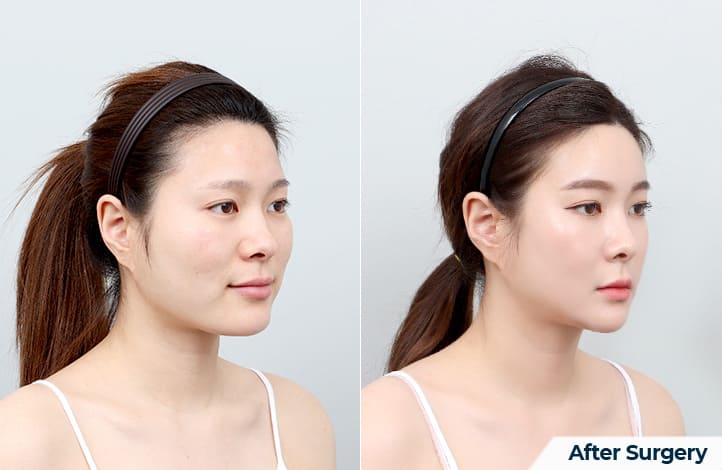
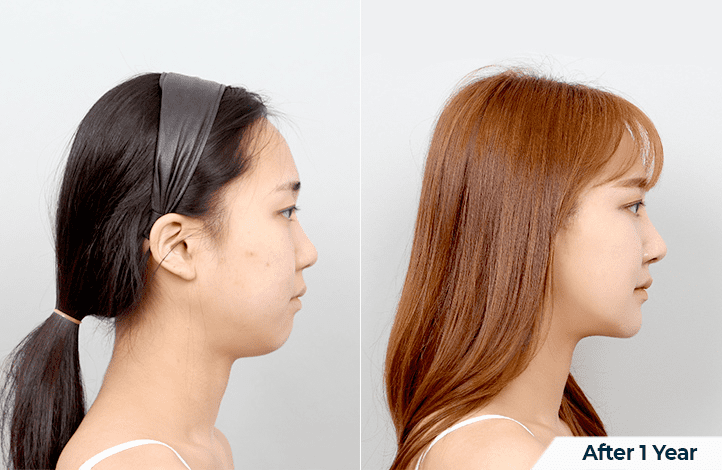
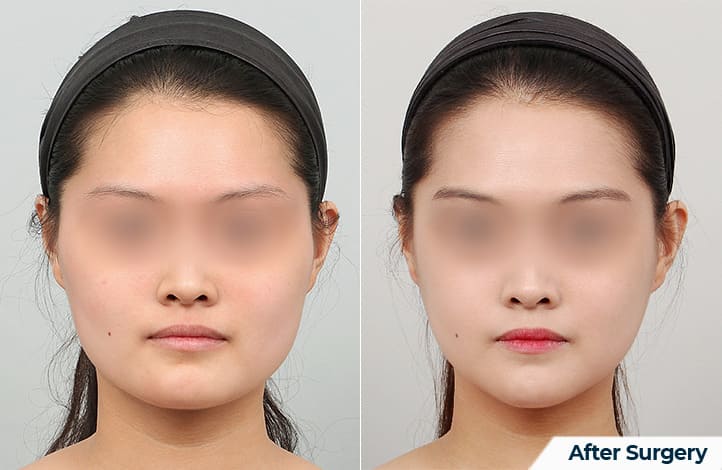
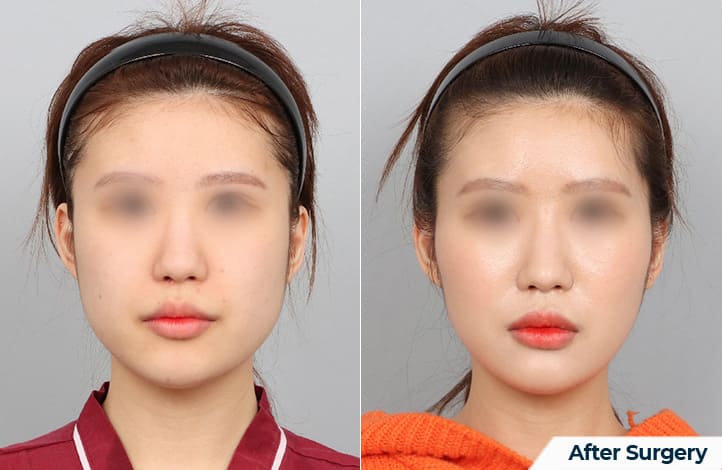
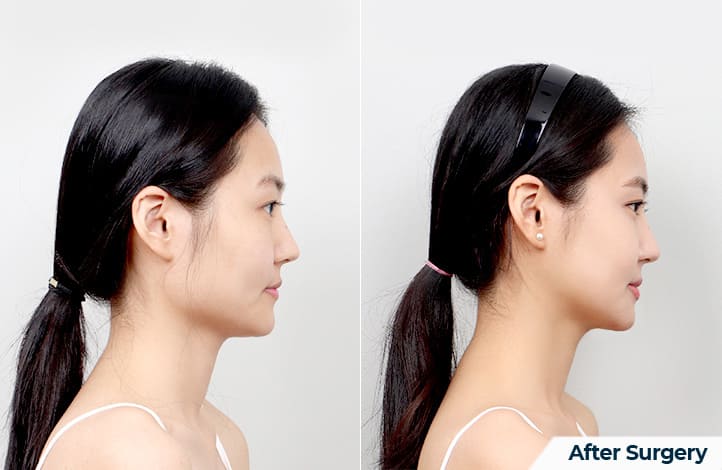
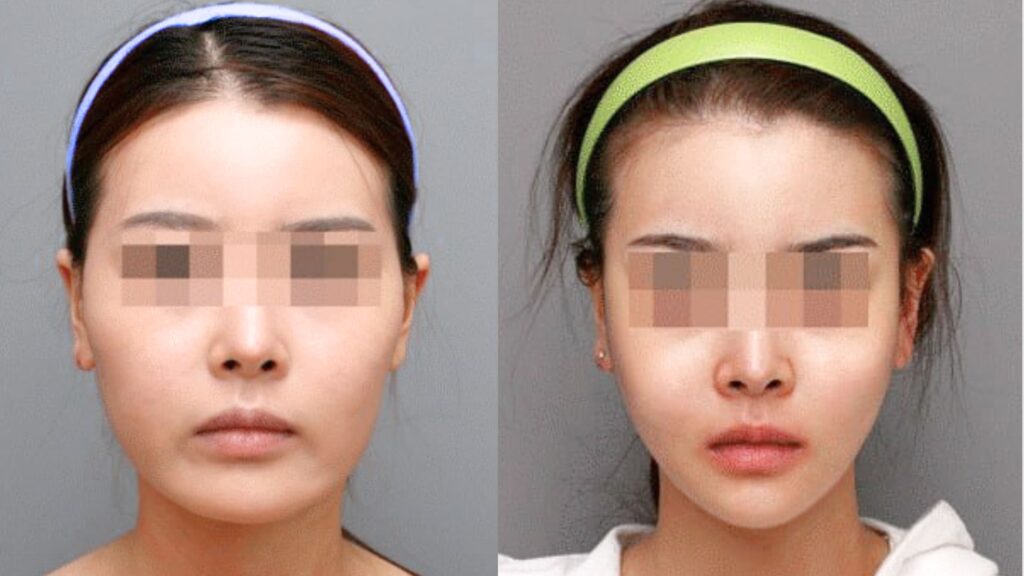
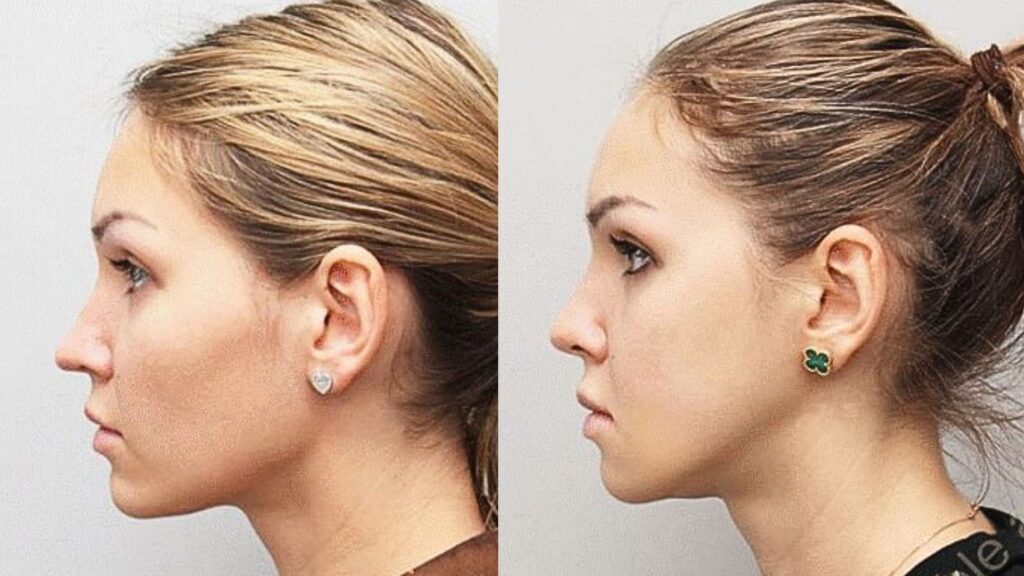
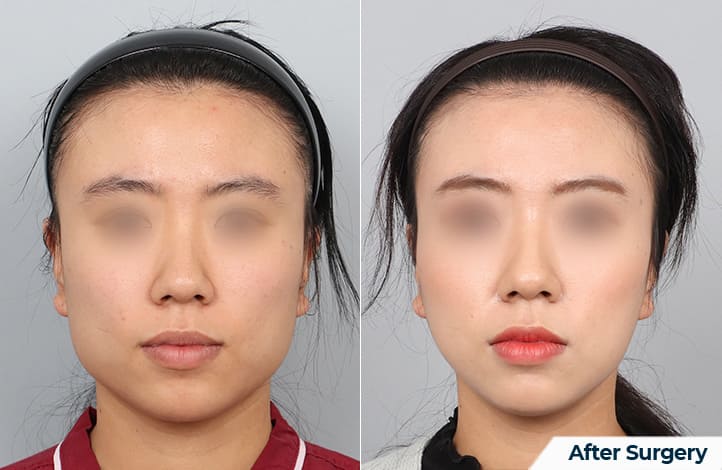
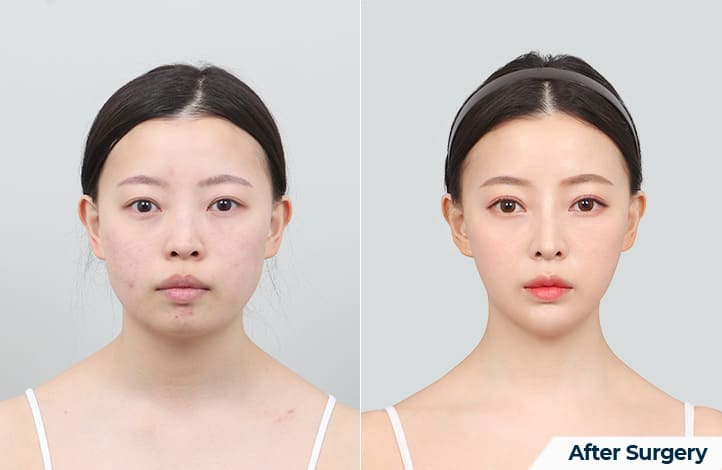
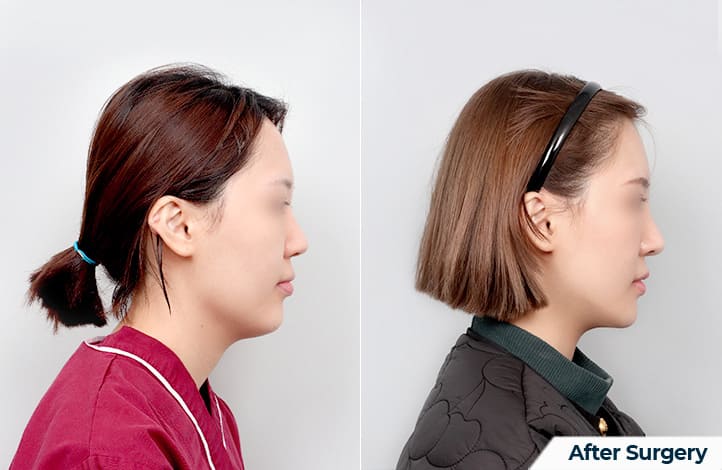
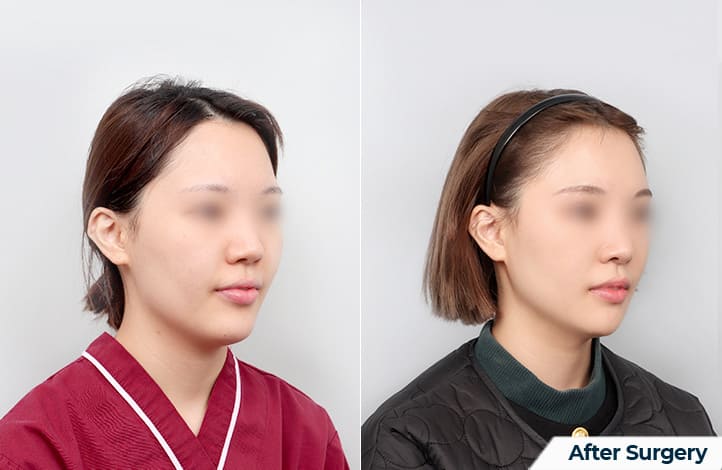
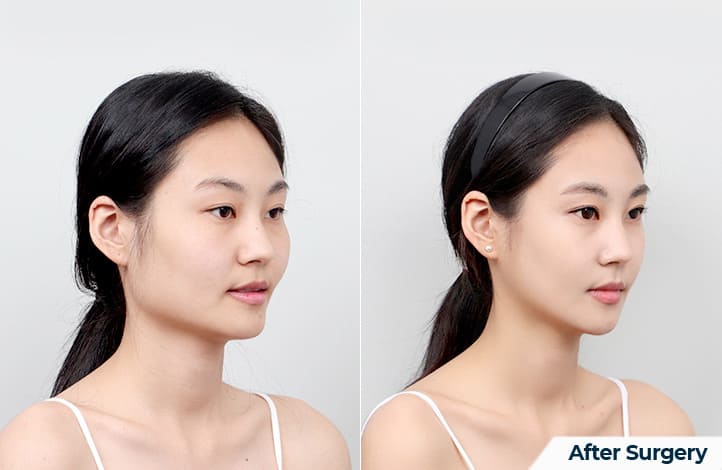
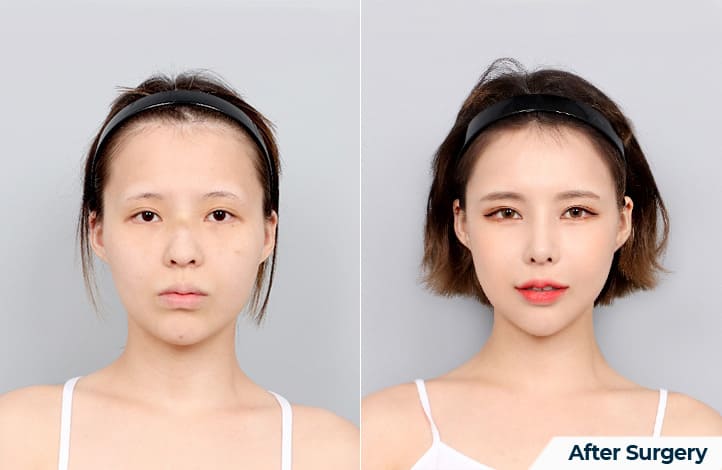
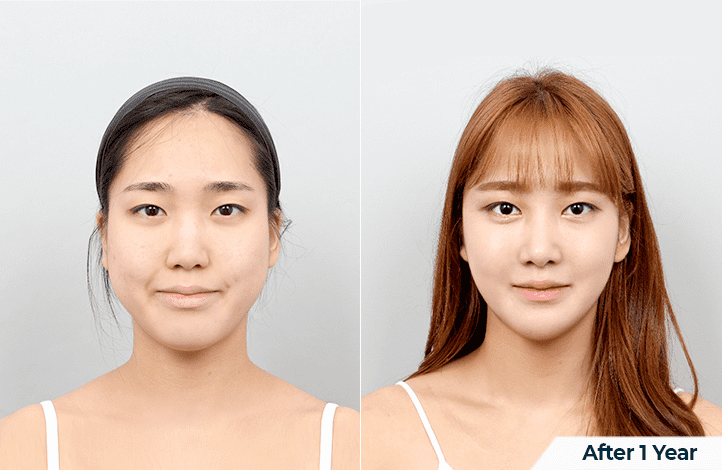
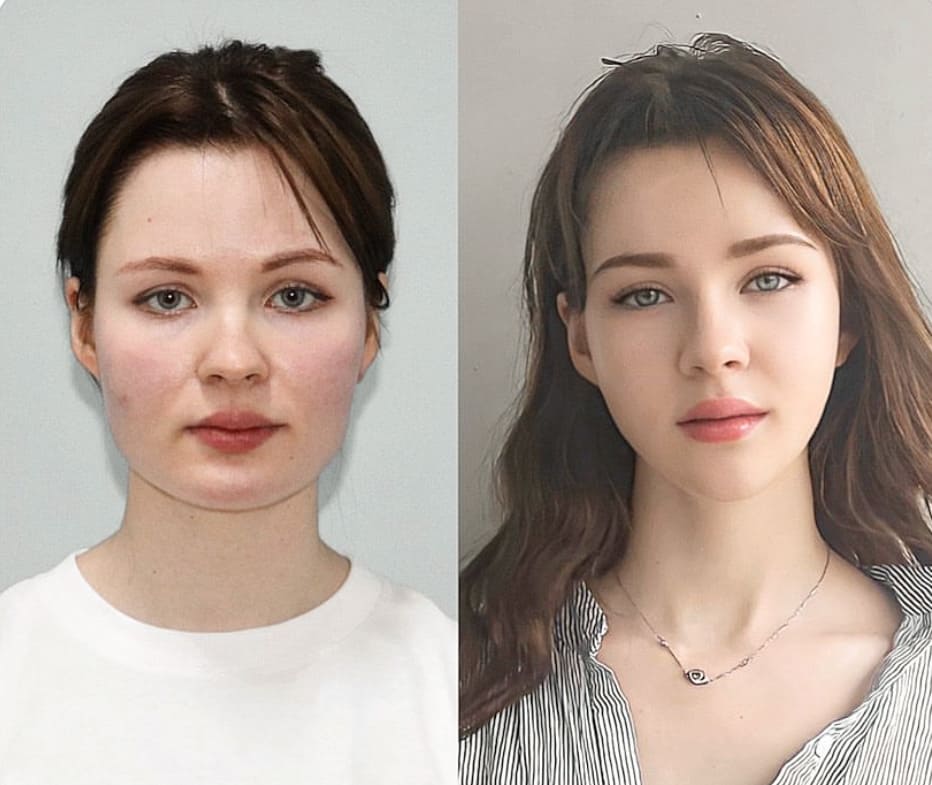
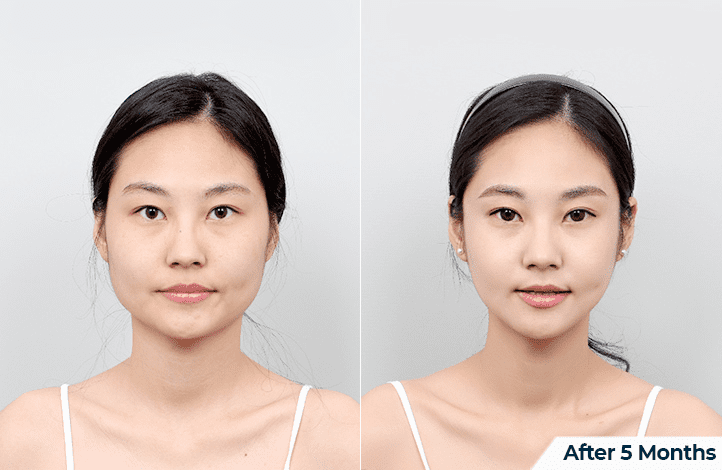
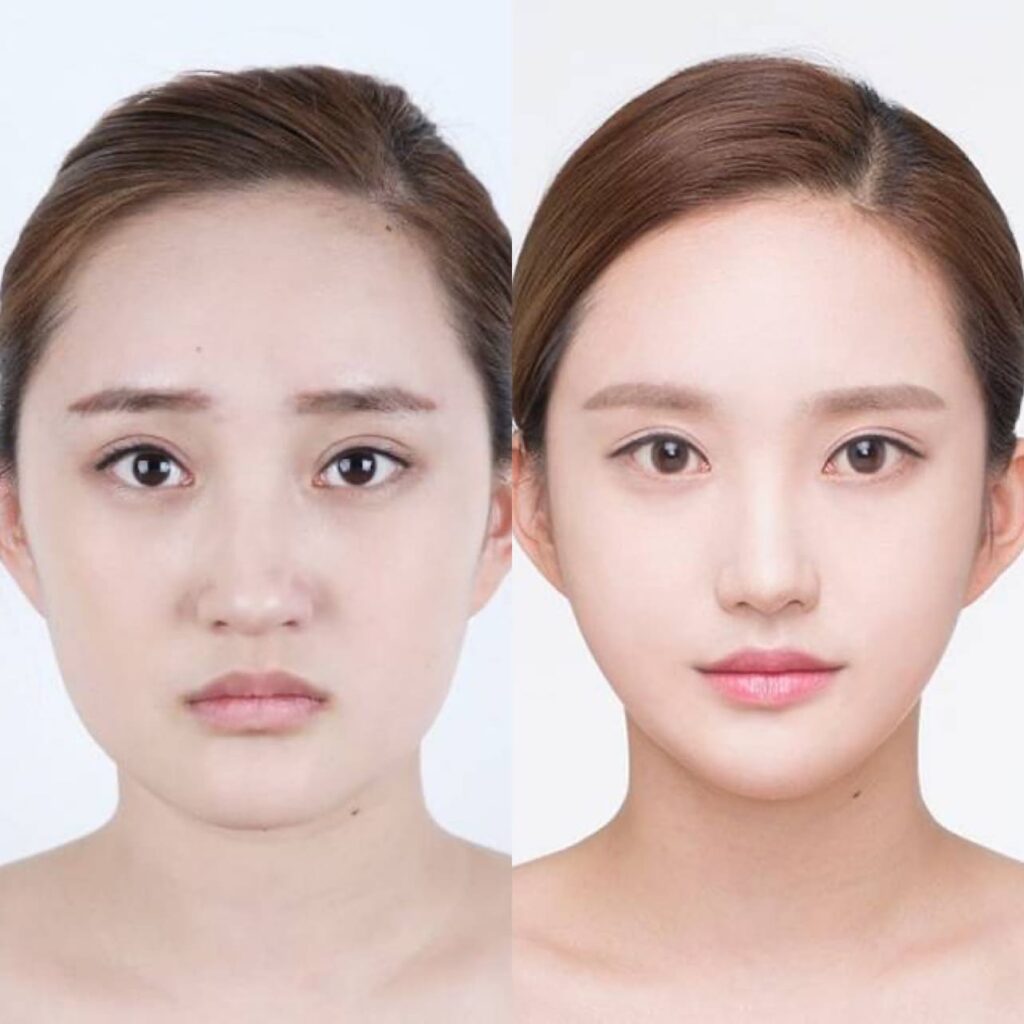
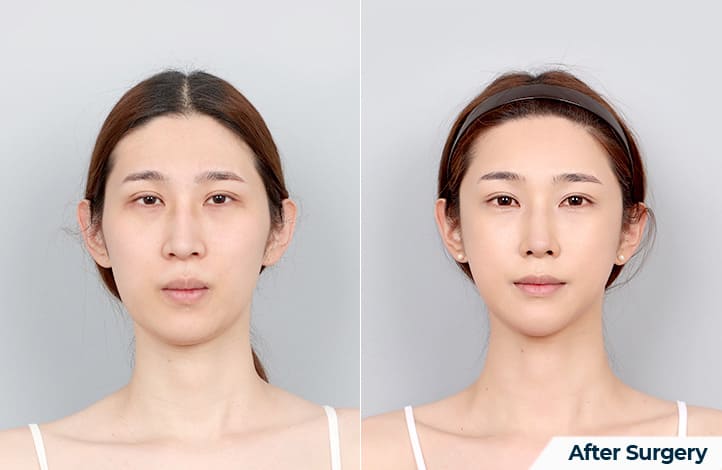
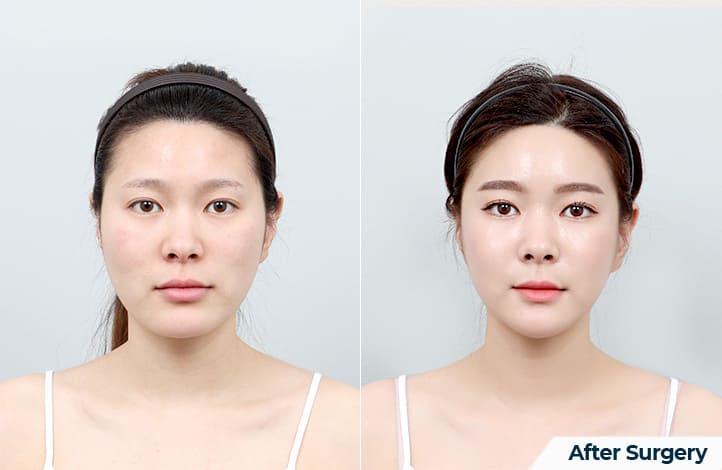
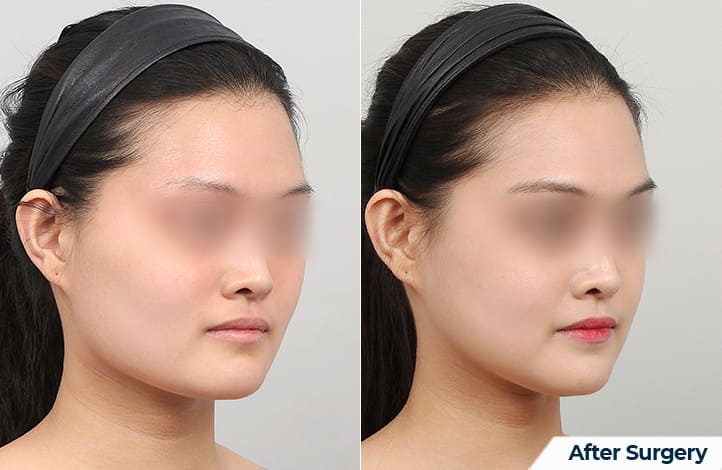
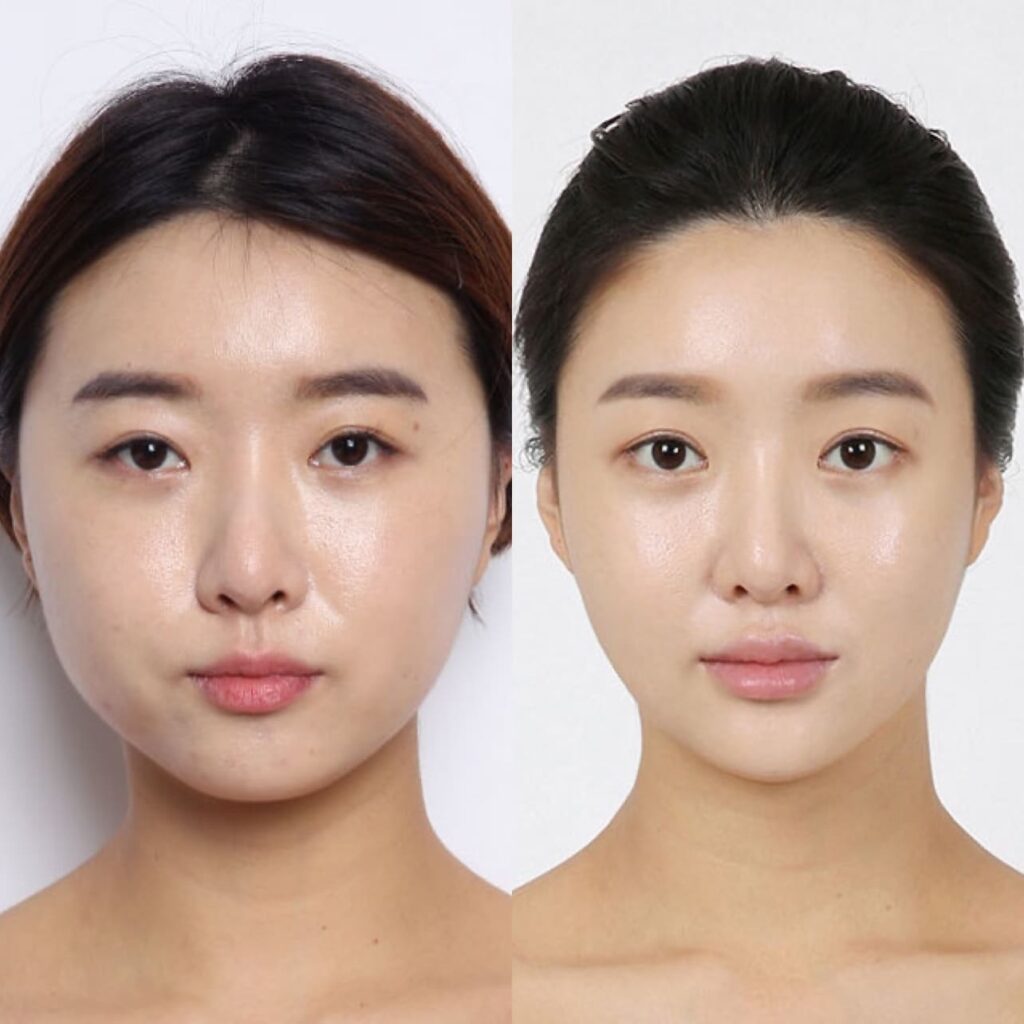
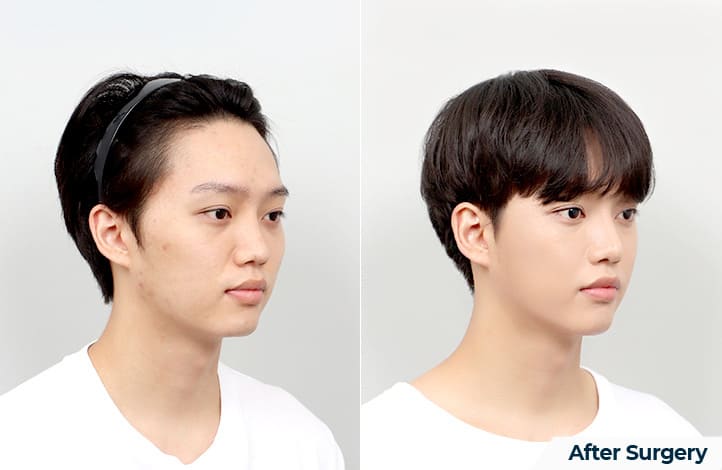
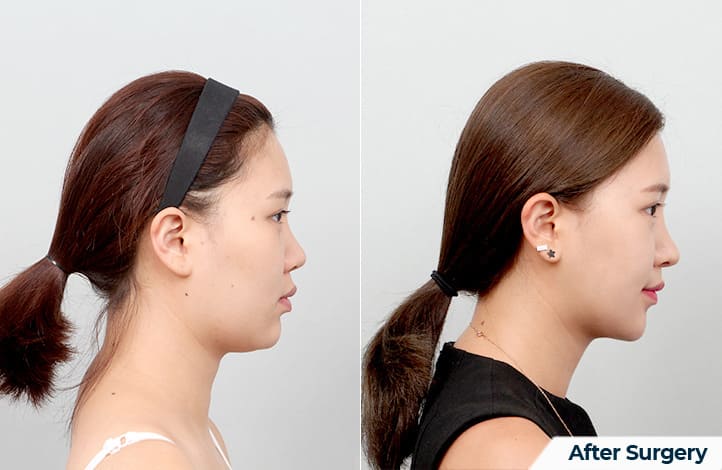
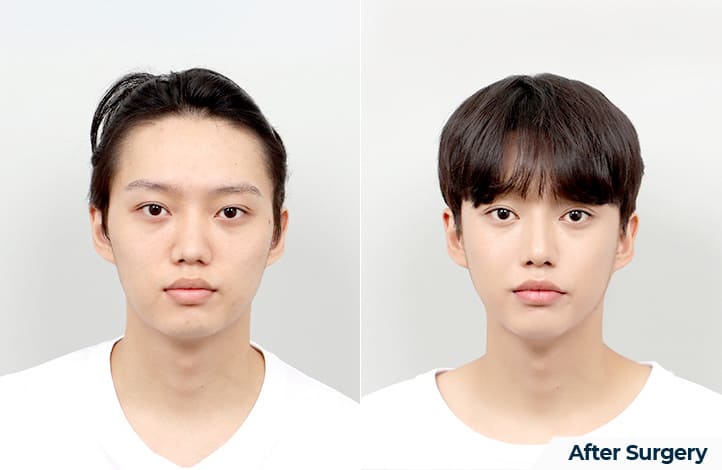
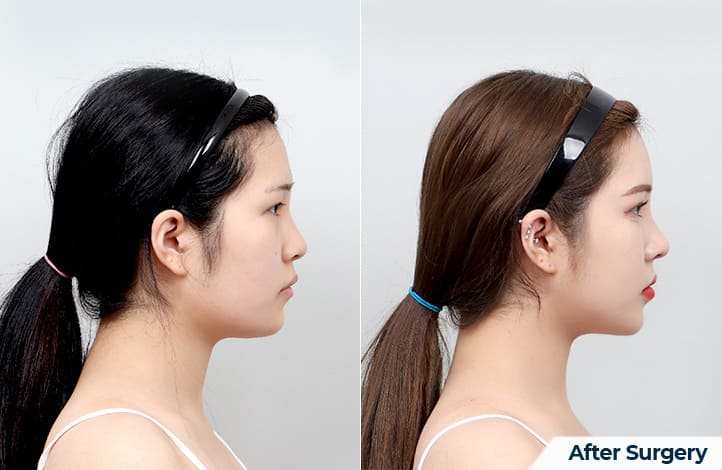
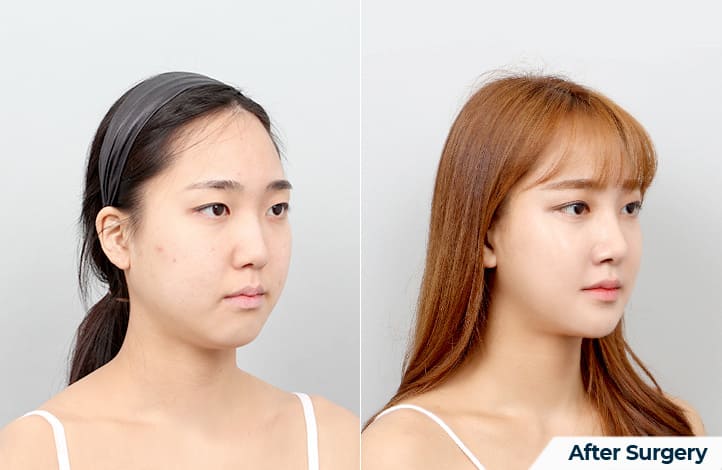
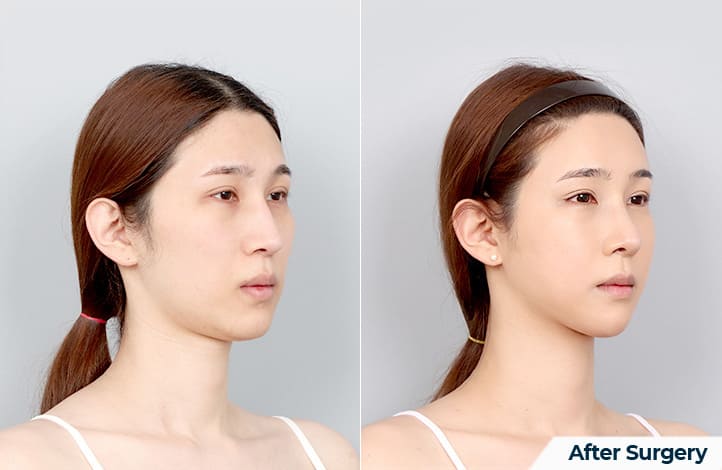
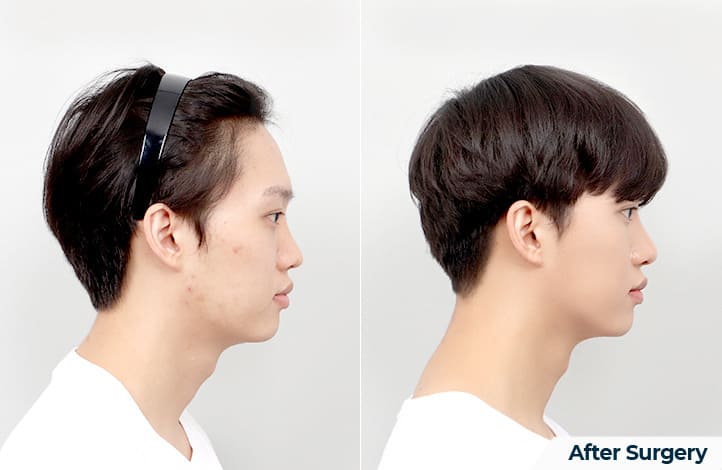
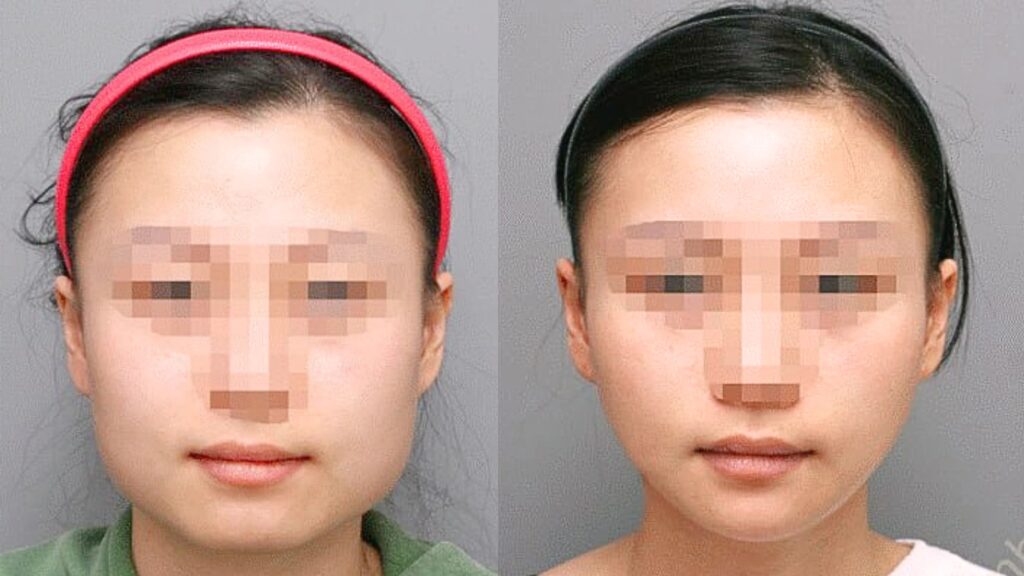
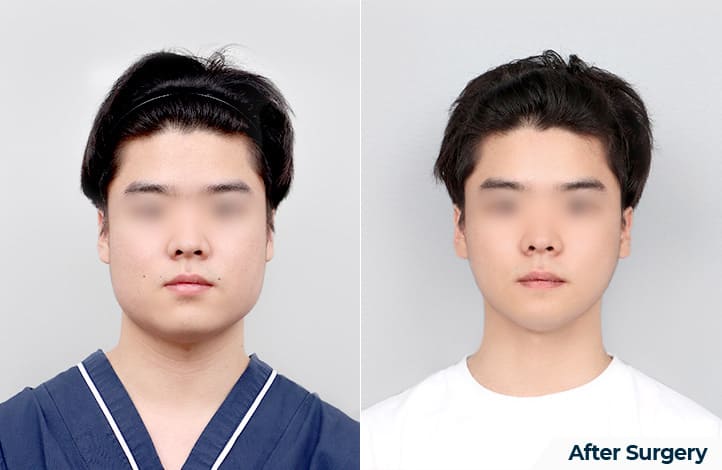
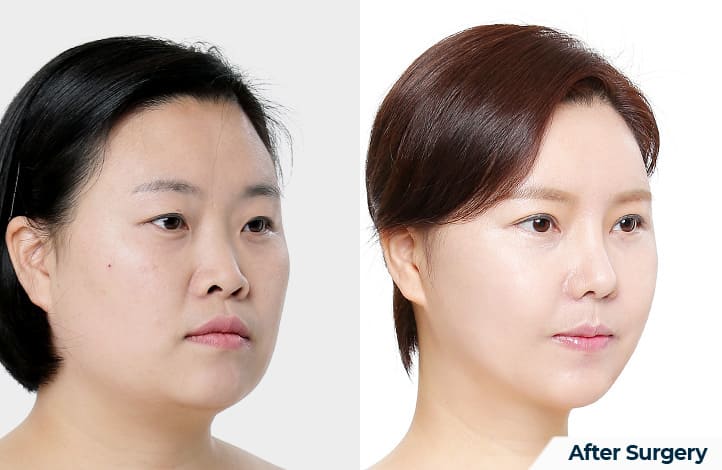
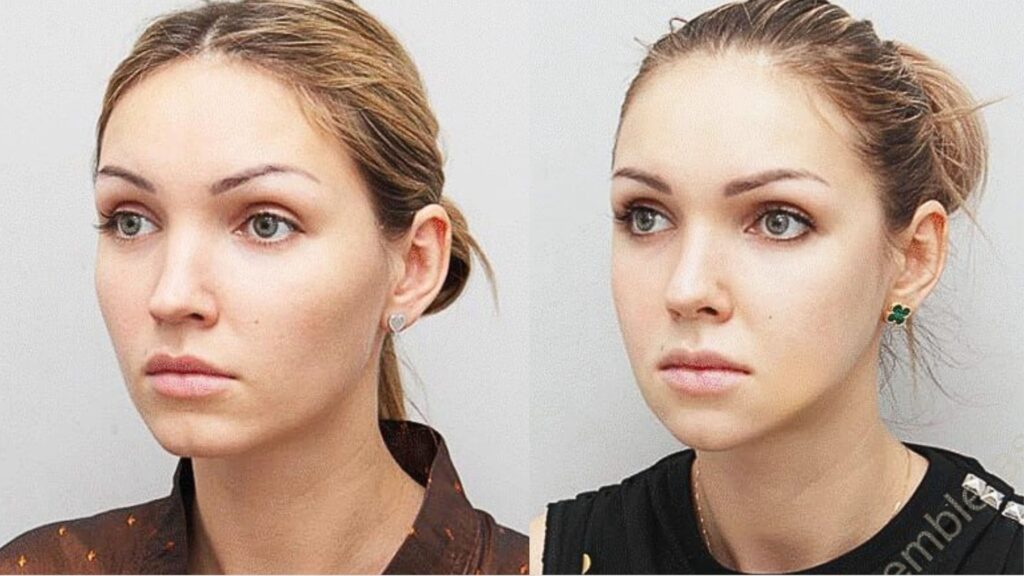
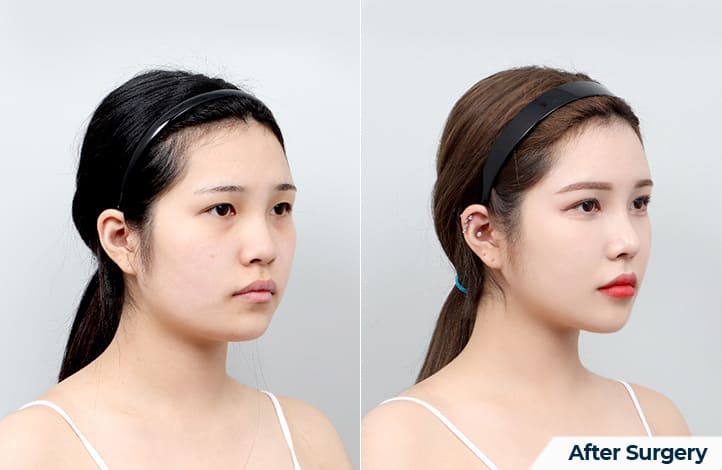
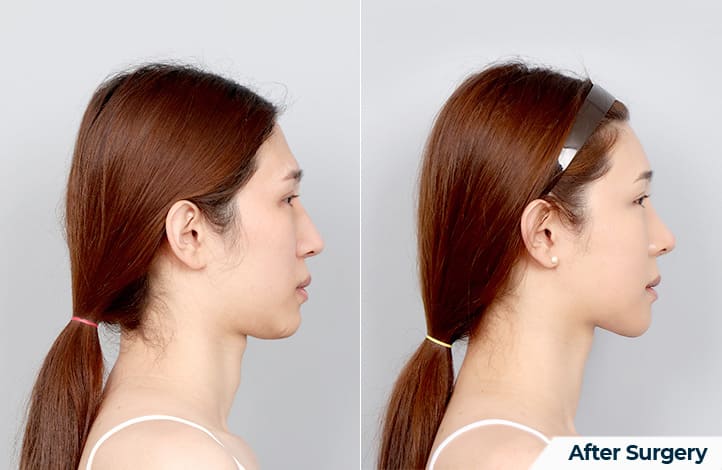
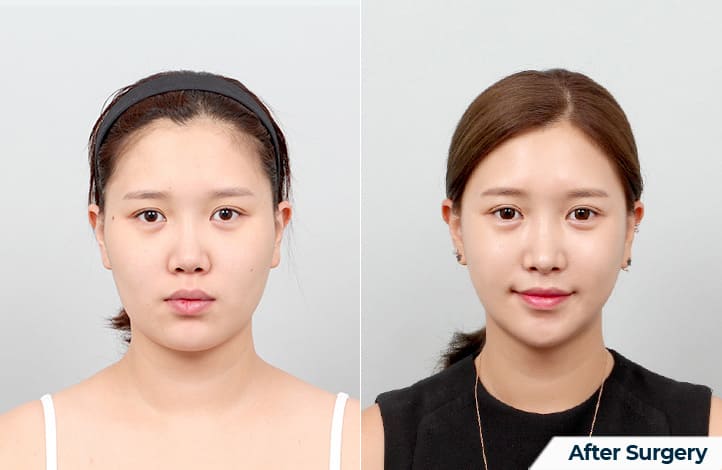
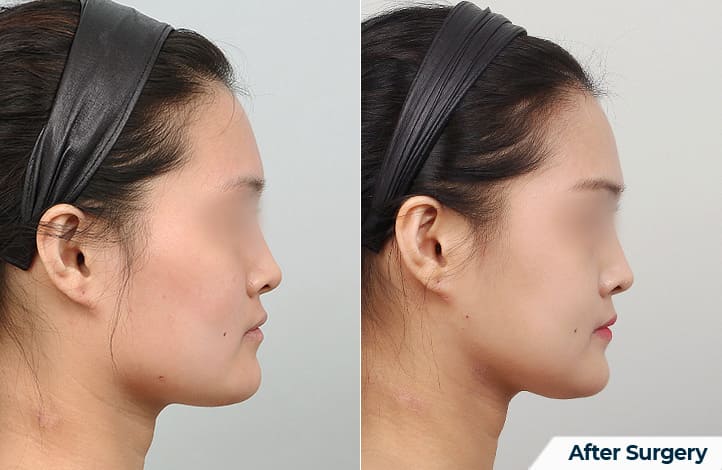
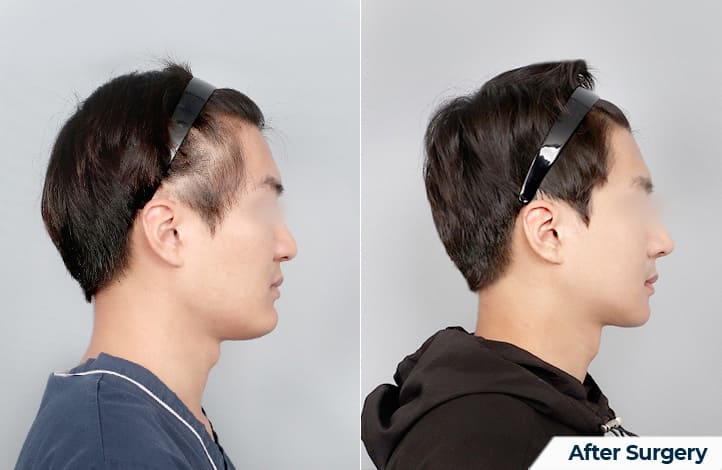
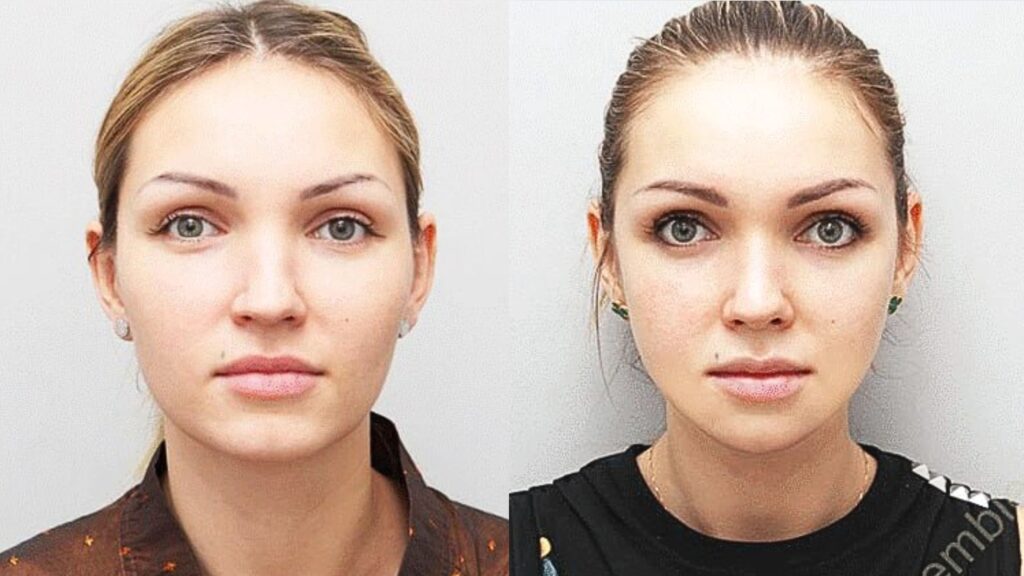
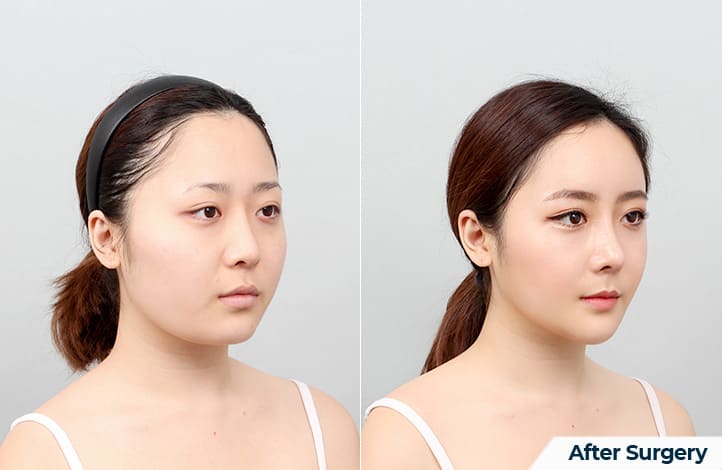
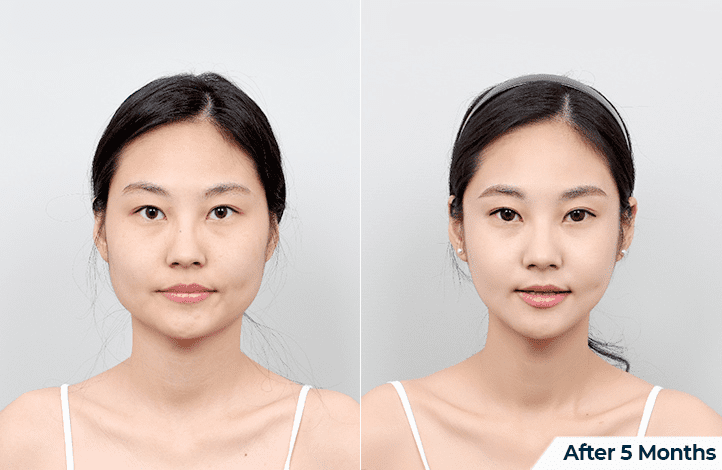
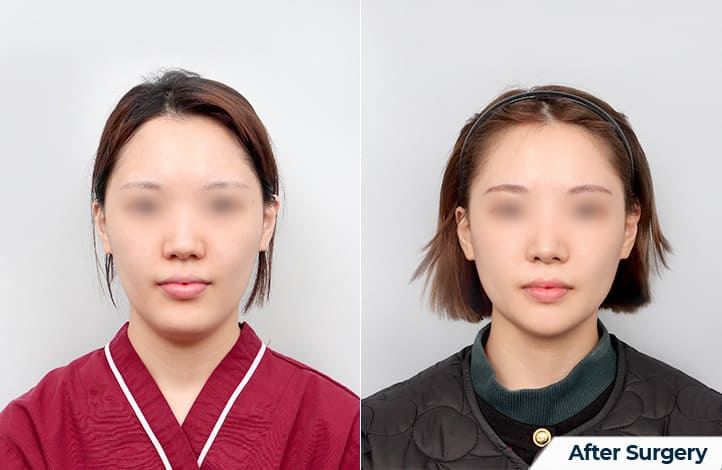
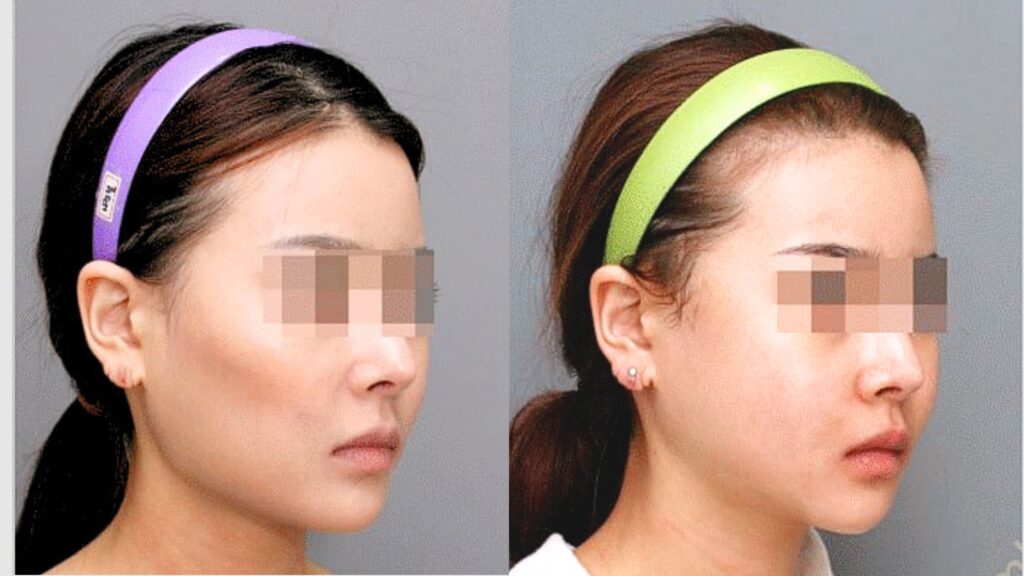
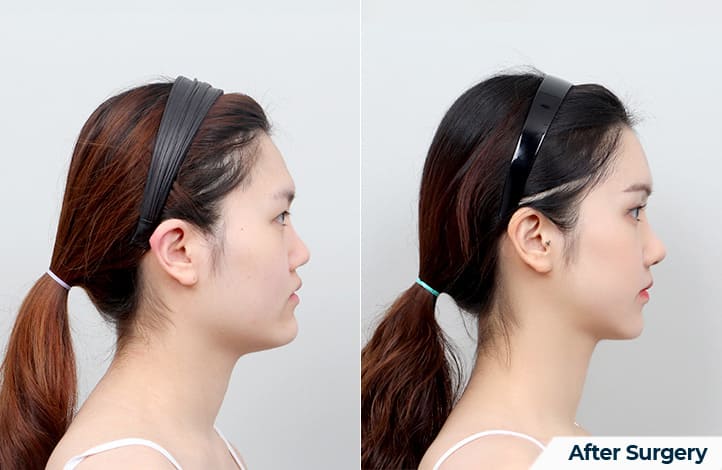
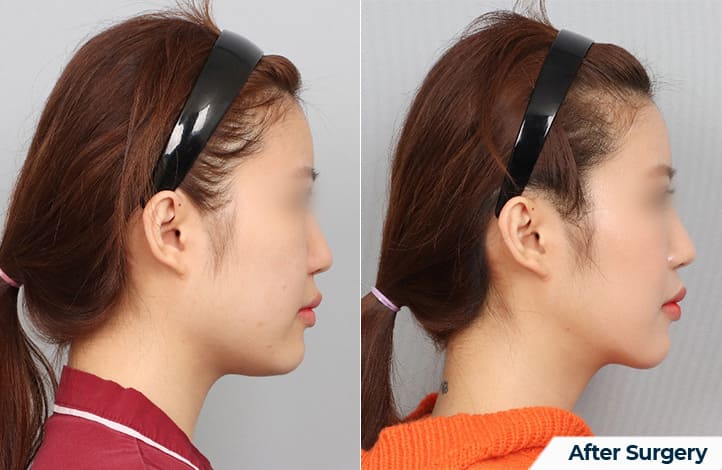
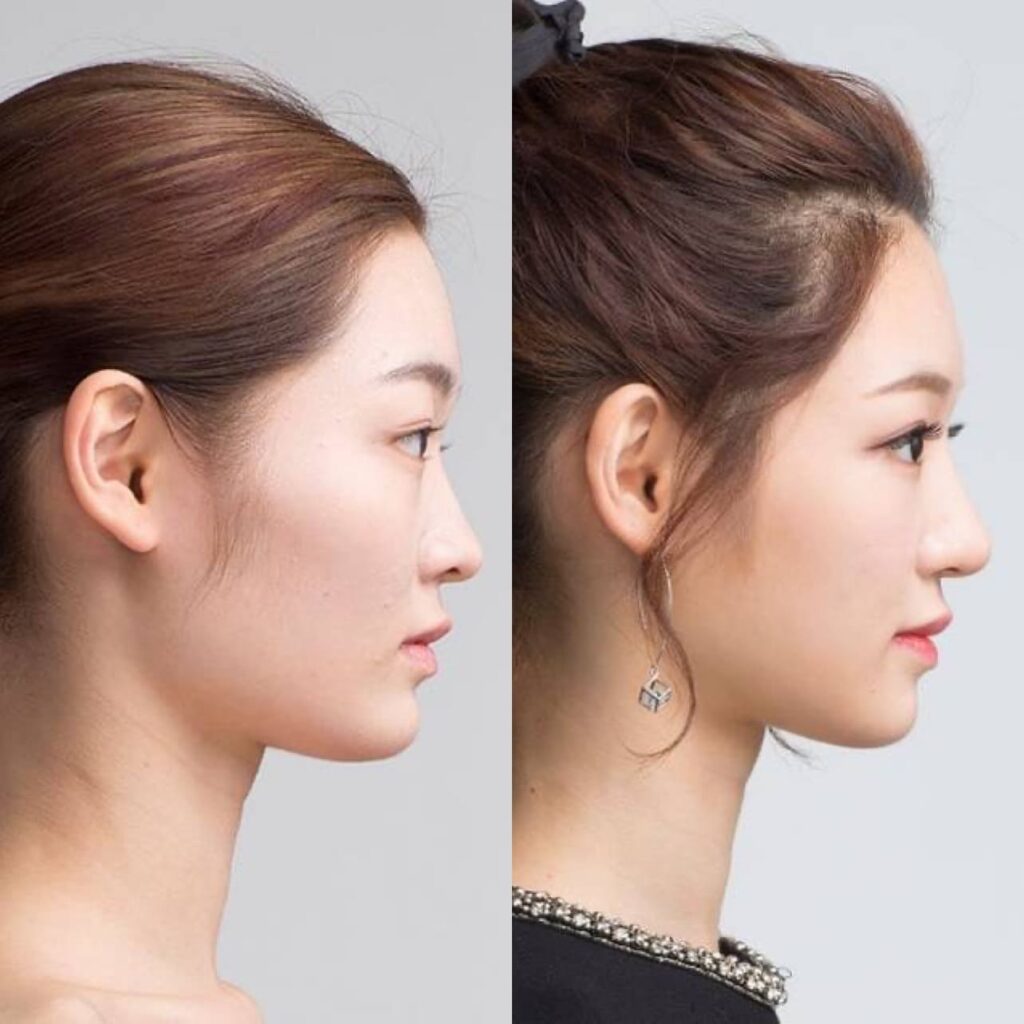
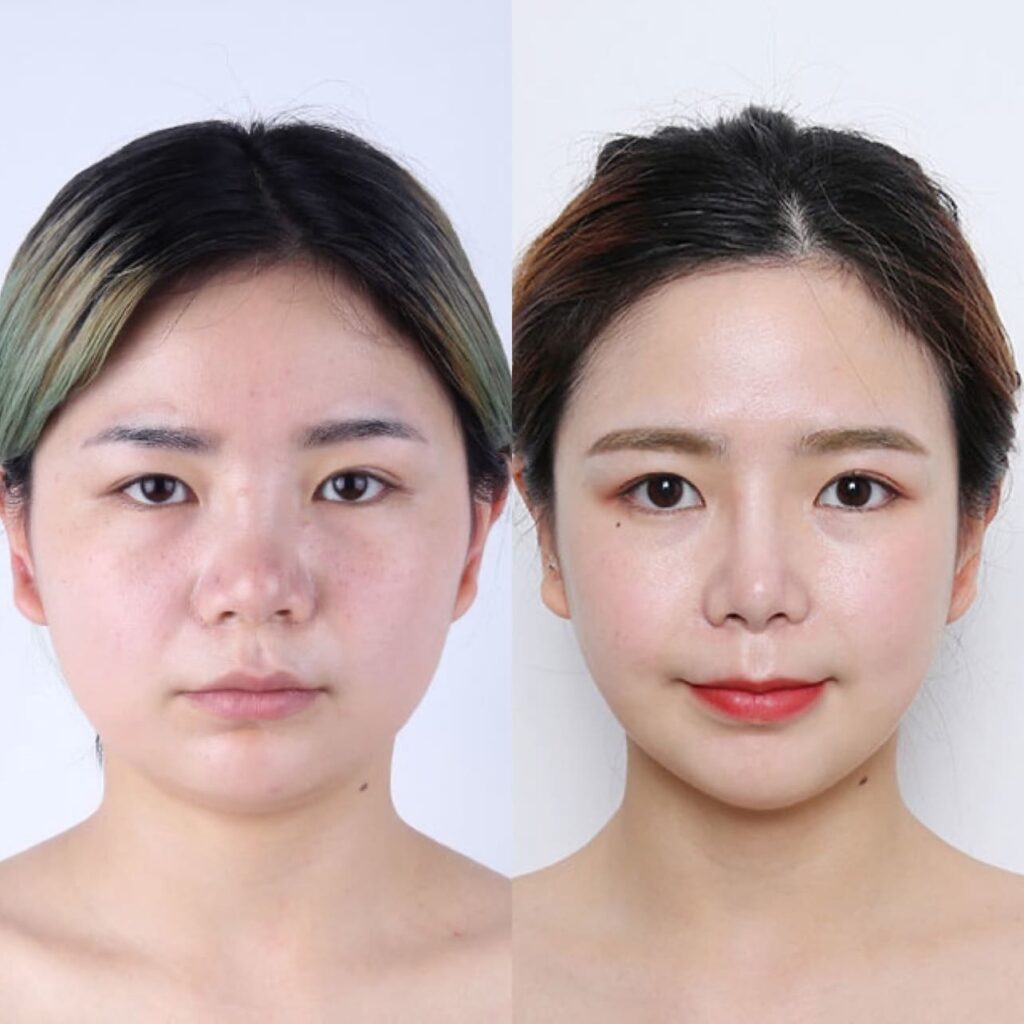
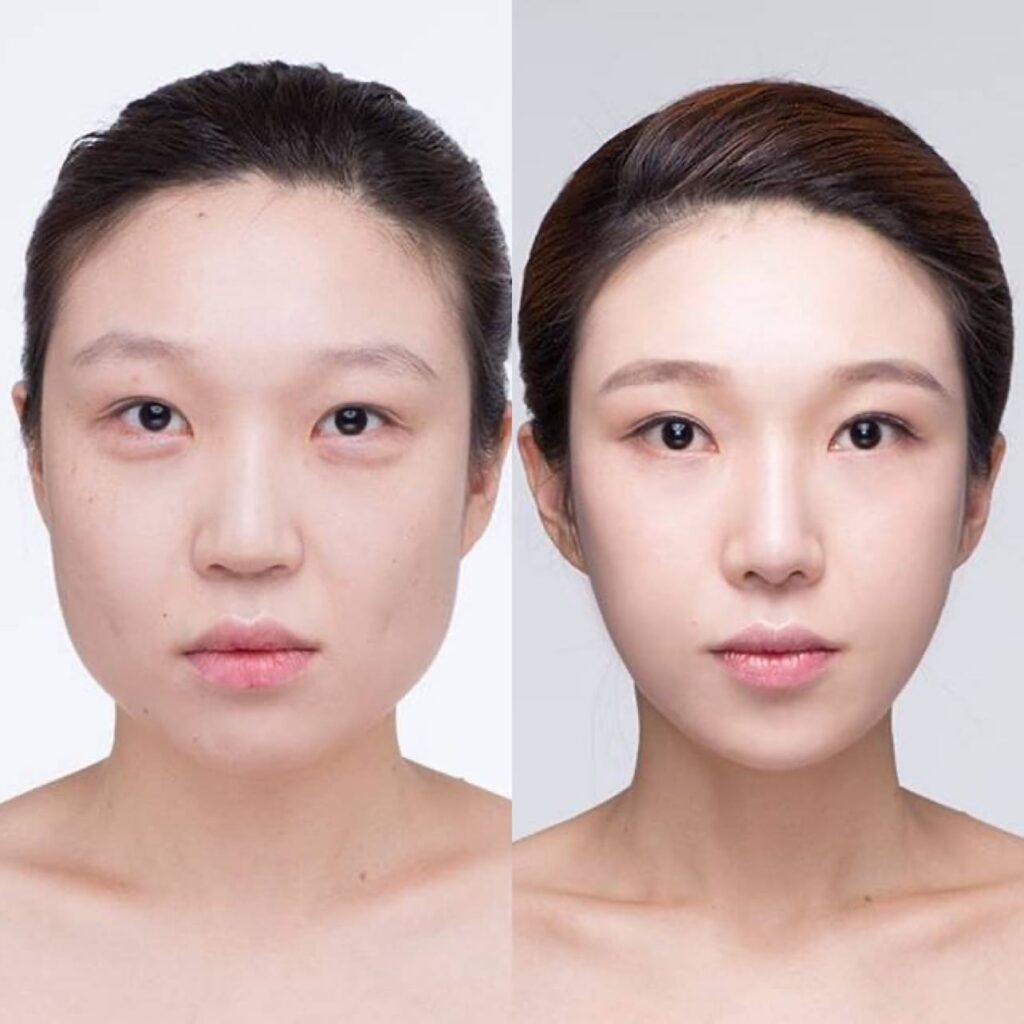
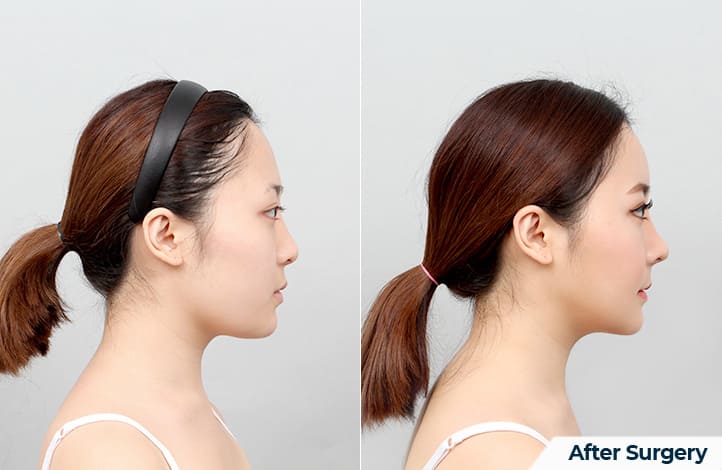
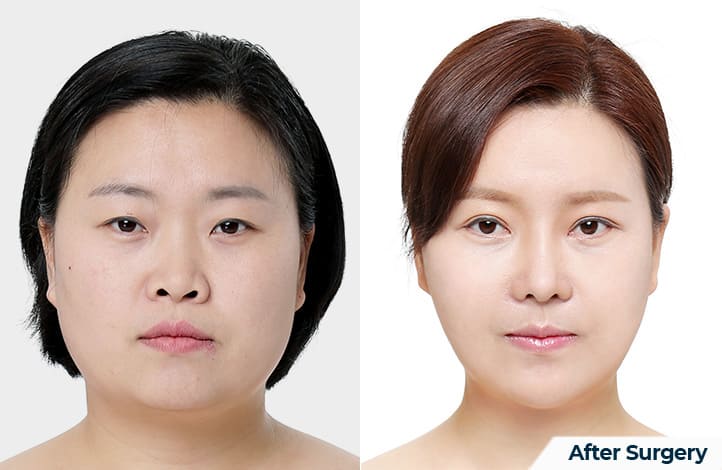
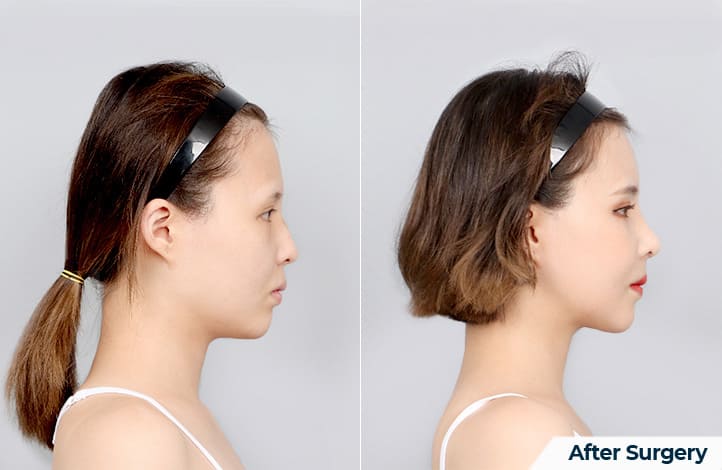
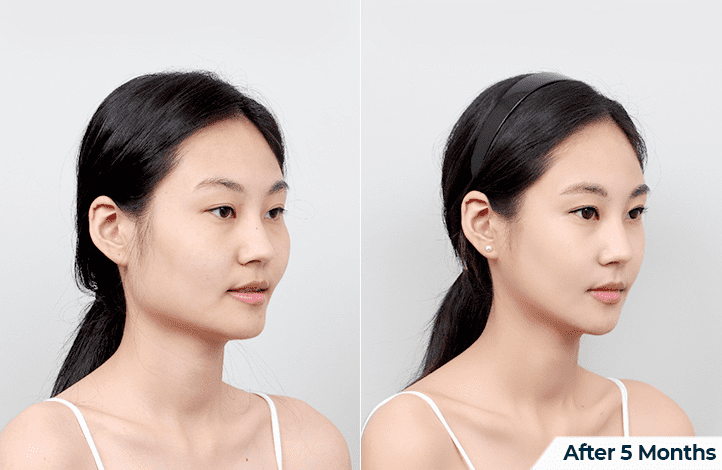
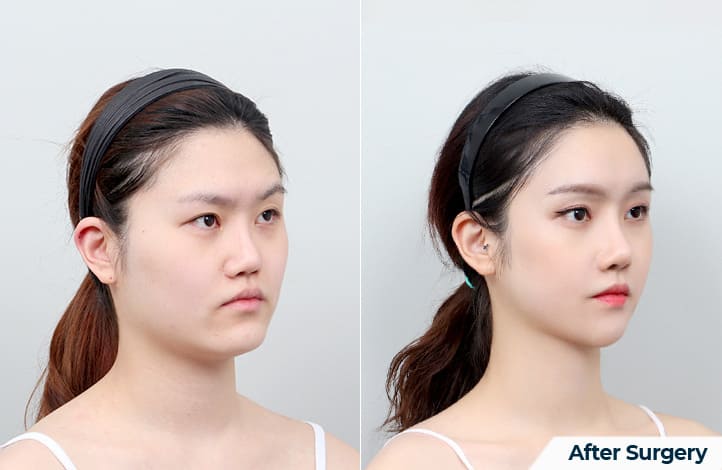
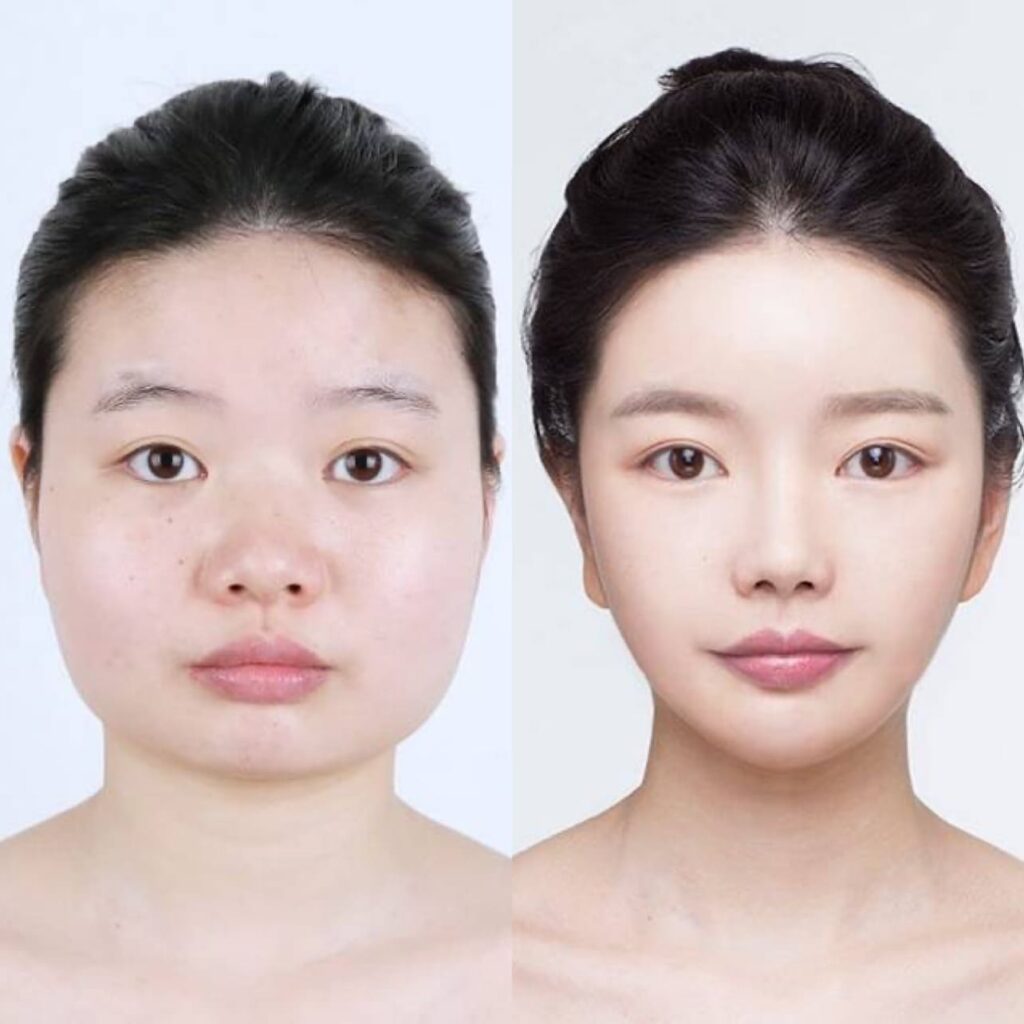
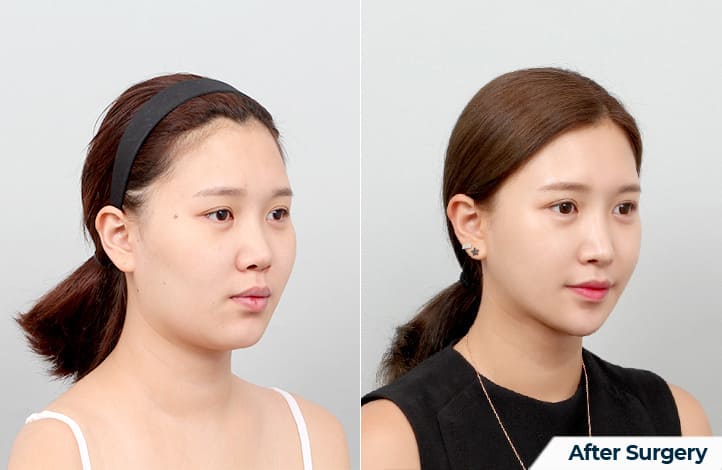
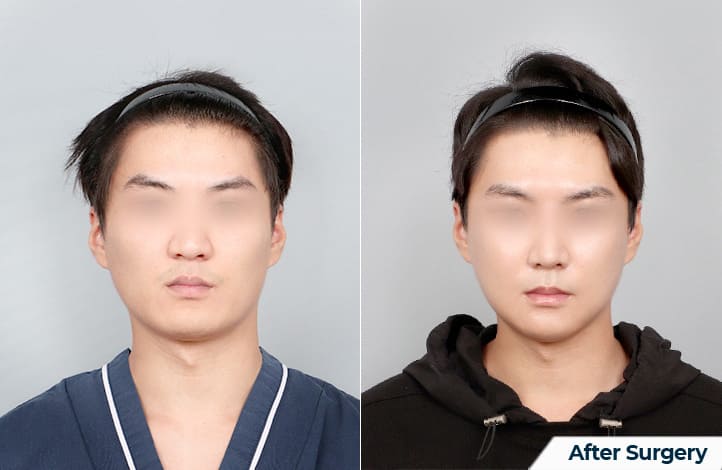
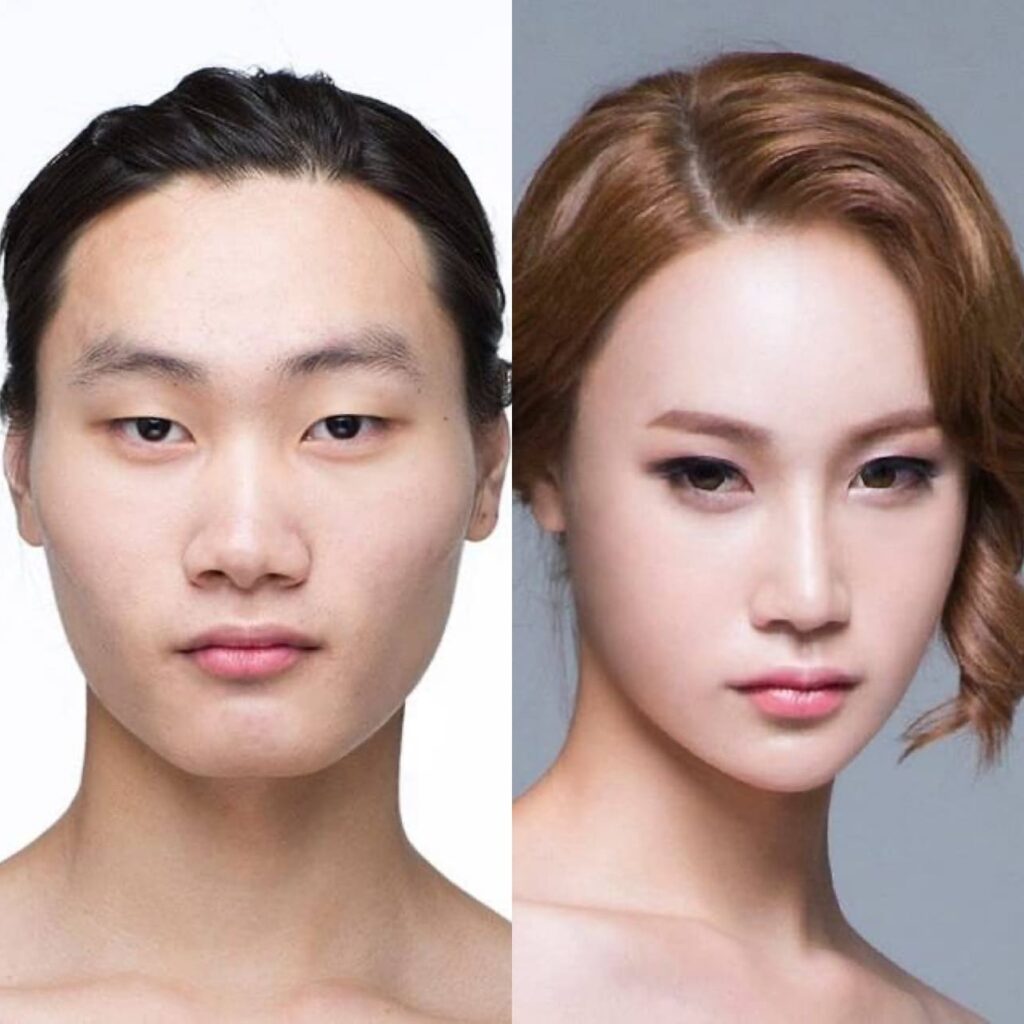
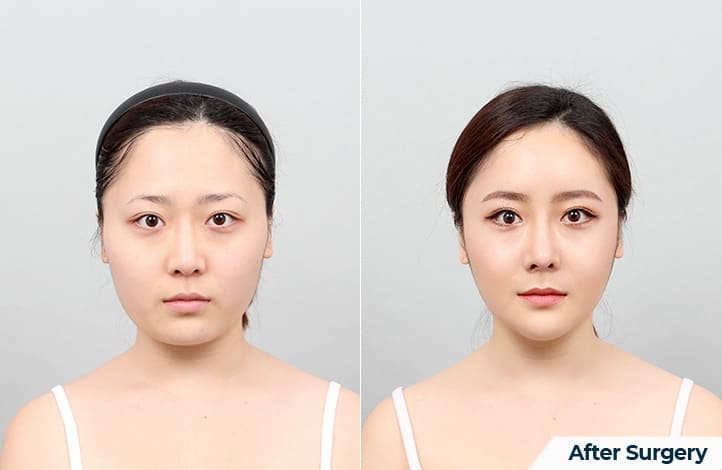
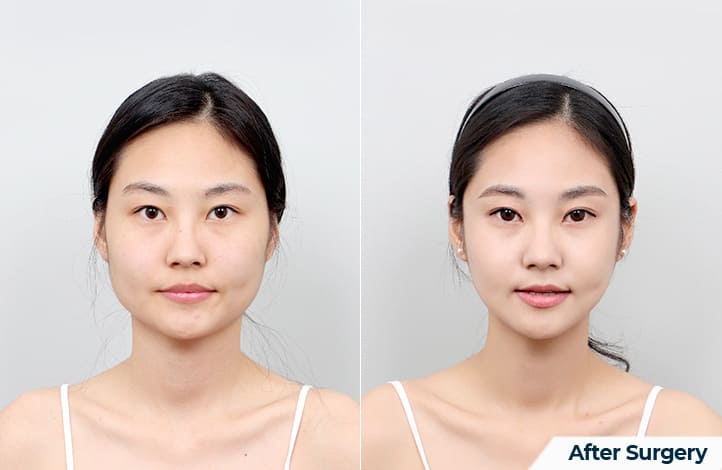
Step 1: Fill out the QUESTIONNAIRE
First and foremost, you need to fill out a form. This will help us and the surgeons better understand your expectations and review your medical history. In the form, be sure to provide your personal information, details about any previous surgeries, and your current health condition. Unfortunately, patients with HIV infection are not eligible for plastic surgeries in Korea.
Step 2: Attach photos
Attaching photos of the areas of your body or face that you would like to have corrected is a crucial step. This allows us to make a preliminary cost estimate and direct you to a specialist who can address your concerns.
Step 3: Submit and wait for confirmation
After submitting the form and photos, your application will be reviewed, and we will contact you to confirm details and schedule a consultation.
Step 4: Prepare for the consultation
Prepare a list of questions you would like to ask the coordinator and surgeon during the consultation. We recommend bringing a phone with notes or a notepad to help you stay organized and obtain all the information you need. Additionally, you can always ask any questions you have in a personal chat created for discussing the details of your trip.
